
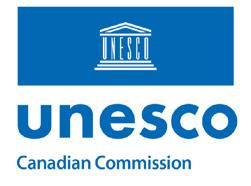
April 2023 Vol. 63 No. 2 $10 Publication 40031215 Display until September 15, 2023 www.edcan.ca Early Reading Skills: Are they back on track? n Priority supports for Ontario schools n How are teachers faring? TM MC Published by In partnership with THE IMPACT OF COVID-19 ON EDUCATION
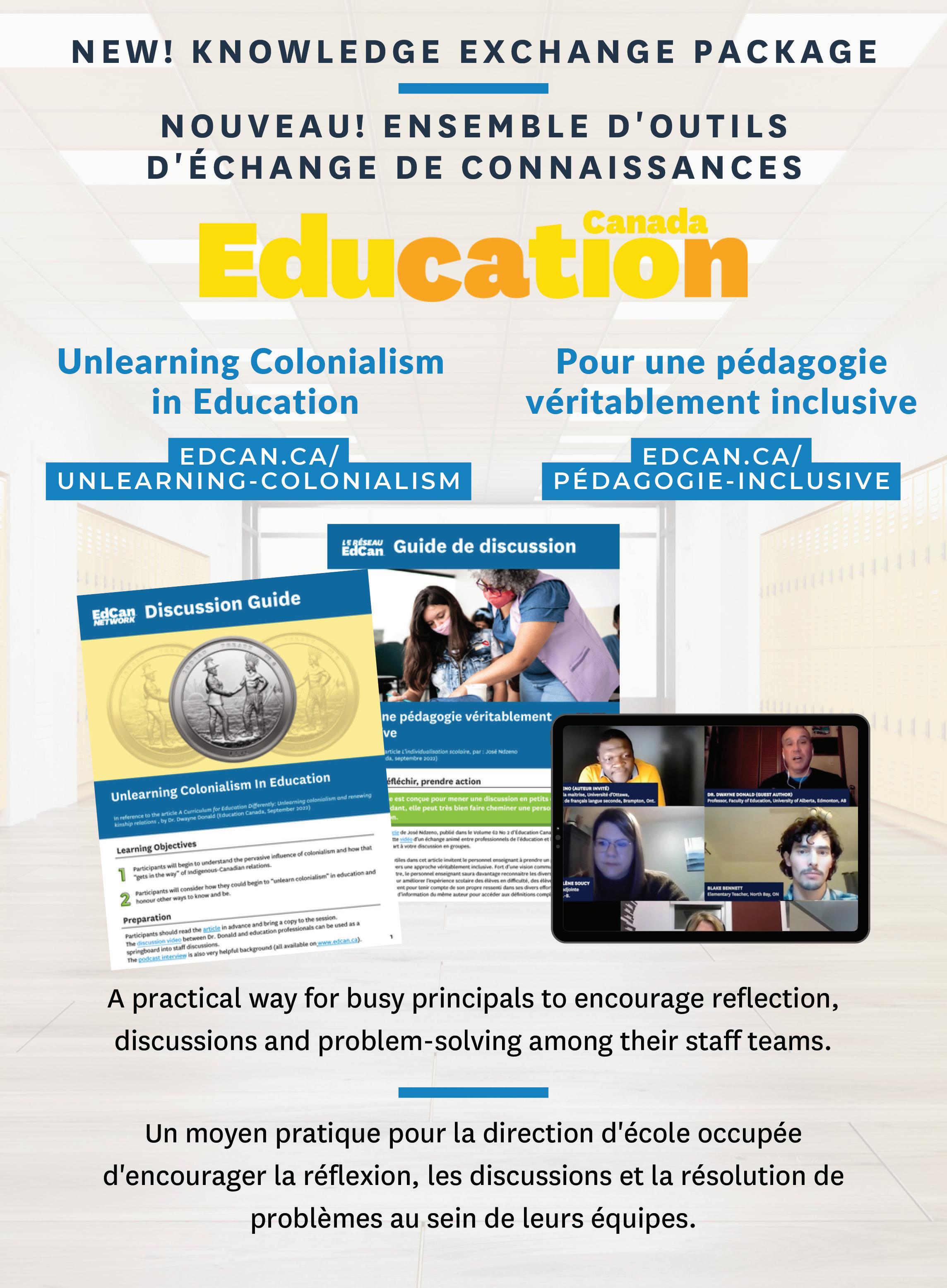
5 EDITOR’S NOTE A Post-Pandemic Health Check
6 NETWORK VOICES COVID-19 Created a Crisis in Education: What Did We Learn?
By Roda Muse
7 Children’s Reading Skills Back on Track
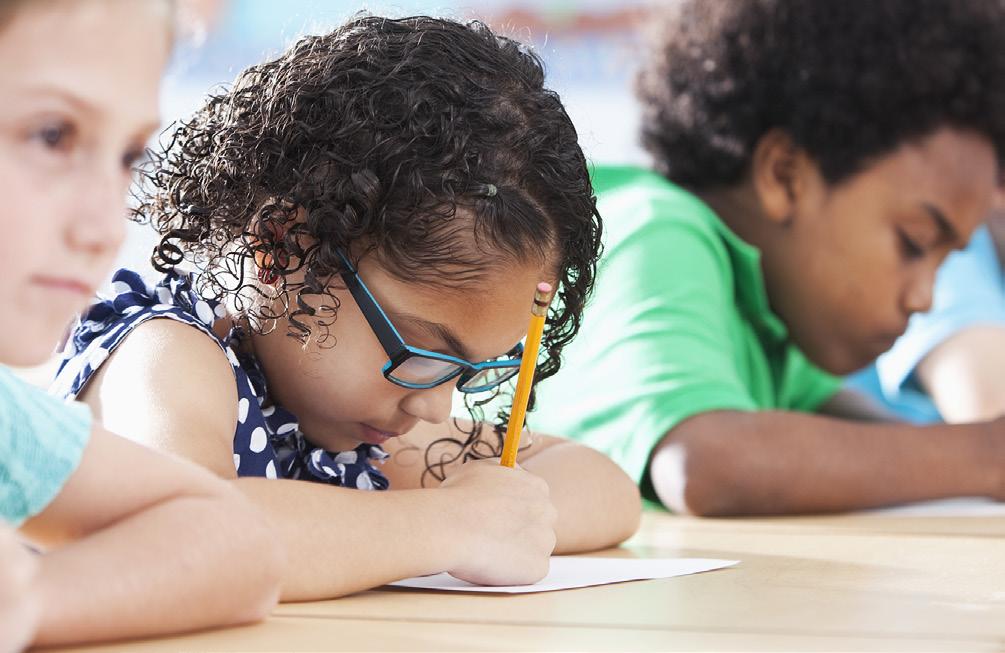
Encouraging findings from Alberta after three years of COVID-19
By George K. Georgiou and Rauno Parrila
10 From Responses to Recovery Puzzles, boats, and the COVID-19 pandemic
By Lesley Eblie Trudel and Laura Sokal
14 Pandemic and Language Resilience in a Francophone Minority Context
By Phyllis Dalley and Hannah Sutherland
18 COVID-19 and the Learning Loss Dilemma

The danger of catching up only to fall behind
By Louis Volante and Don A. Klinger
17 Challenges and Opportunities
Student perspectives on the impact of COVID-19
By Fiona Shen and Raeesa Hoque
24 Effects of School Disruptions in the Years 2020 and 2021 on the Learning of Quebec Children
By Sylvana Côté, Catherine Haeck, Simon Larose, and collaborators
28 ‘COVID Taught Us a Lot About Priorities’
Three years into the pandemic, what kind of supports do Ontario schools need?
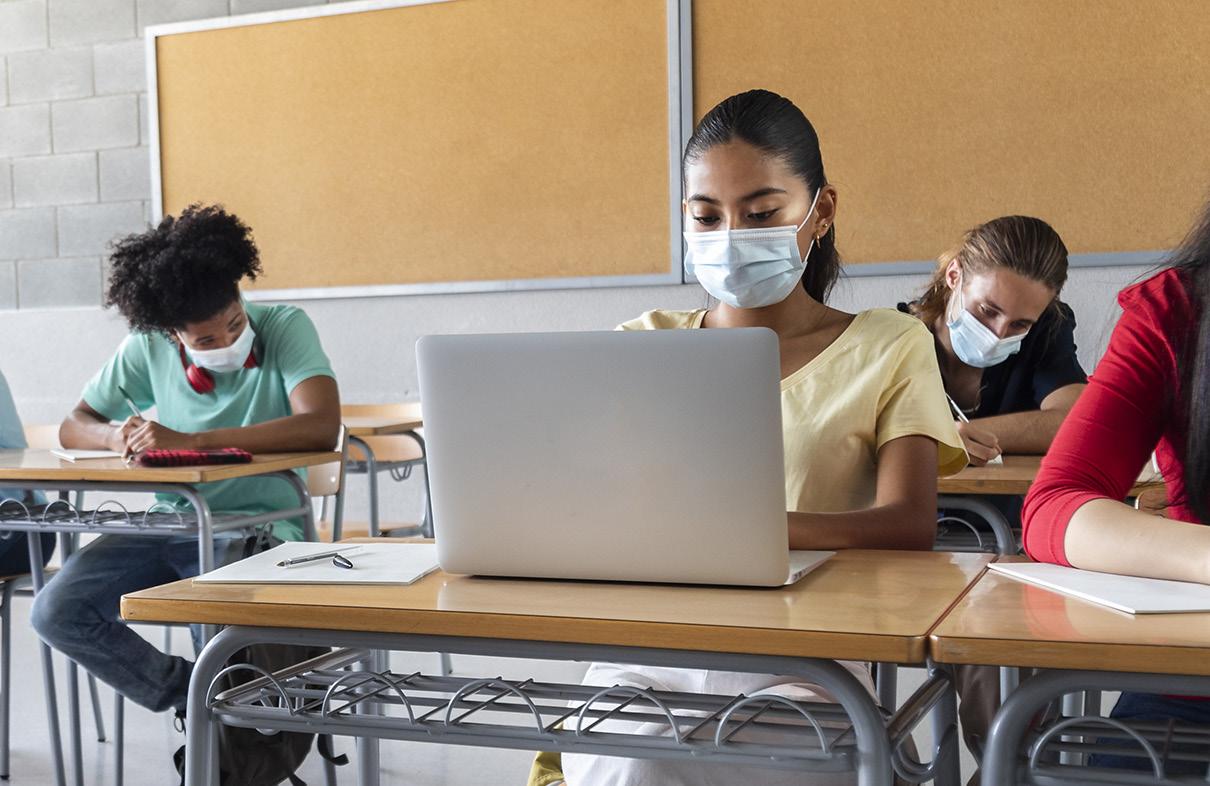 By Robin Liu Hopson and Jasmine Hodgson-Bautista
By Robin Liu Hopson and Jasmine Hodgson-Bautista
32 Quebec Elementary and Secondary School Teachers’ Perceptions of the Effects of COVID-19 on Their Students
By Marion Deslandes Martineau, Patrick Charland and collaborators
WEB EXCLUSIVES
www.edcan.ca/magazine
Playing Out of the Pandemic
The Canadian Playful Schools Network
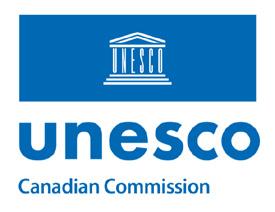 By Trista Hollweck, Megan Cotnam-Kappel, Andy Hargreaves and Amal Boultif
By Trista Hollweck, Megan Cotnam-Kappel, Andy Hargreaves and Amal Boultif
www.edcan.ca/magazine EdCan Network | April 2023 • EDUCATION CANADA 3
Apri 2023 n Vol. 63 No. 2 n www.edcan.ca
18 32 17
Contents
PHOTO: ISTOCK
PHOTO: ISTOCK
COVER ILLUSTRATION: Elaine Will
PHOTO: ISTOCK
In partnership with
Executive Editor Max Cooke
English Editor Holly Bennett
Art Director Dave Donald
Operations Manager Mia San José
Program Director of Well at Work Kathleen Lane
Development and Partnerships Manager Renuka Jacquette
Marketing Manager Shanice Tadeo
Client and Member Specialist Miruna Chitoi
Administrative and Project Coordinator Nour Naffaa
Advertising Sales advertise@edcan.ca
Publisher Canadian Education Association
Chair Claire Guy
Education Canada Editorial Board
Marius Bourgeoys, cofondateur d’escouadeÉDU, conférencier, coach et consultant, L’Orignal, ON
Dr. Curtis Brown, Retired Superintendent, South Slave Divisional Education Council, Fort Smith, NT
Dr. Alec Couros, Director, Centre for Teaching and Learning, University of Regina, Regina, SK
Nathalie Couzon, technopédagogue, Collège Letendre, Laval, QC
Grant Frost, President (Halifax County Local), Nova Scotia Teachers’ Union, Halifax, NS
Roberto Gauvin, Consultant en éducation chez Édunovis, Édunovis, Lac-Baker, NB
François Guité, consultant au ministère de l’Éducation, de l’Enseignement supérieur et de la Recherche (MEESR) du Québec, Québec, QC
Dr. Michelle Hogue, Assistant Professor and Coordinator of the First Nations Transition Program, University of Lethbridge, Lethbridge, AB
© 2023 Canadian Education Association/l’Association
canadienne d’éducation ISSN 0013-1253
Publications Mail Agreement No. 40031215 HST/TVH # R100763416 www.edcan.ca
Rooted in the Canadian education experience and perspective, our English and French articles provide voice to teachers, principals, superintendents and researchers – a growing network of experts who examine today’s school and classroom challenges with courage and honesty. Pragmatic, accessible and evidence-based, Education Canada connects policy and research to classroom practice.
Education Canada is published three times yearly by the EdCan Network.
703-60 St. Clair Avenue East Toronto, ON M4T 1N5 Tel: (416) 591-6300; Fax: (416) 591-5345 publications@edcan.ca www.edcan.ca
Member of Magazines Canada
The EdCan Network no longer sells subscriptions to Education Canada. This publication is available to EdCan Network members only. Libraries, schools and academic institutions can still purchase subscriptions through a subscription agency.
Normand Lessard, Secrétaire général, Association des directions générales scolaires du Québec, Sherbrooke, QC Corinne Payne, Directrice Générale, Fédération des comités de parents du Québec (FCPQ), Québec, QC
David Price, Senior Associate, Innovation Unit, Leeds, UK
Zoe Branigan Pipe, Teacher, Hamilton, ON Cynthia Richards, Canadian Home and School Federation, Chipman, NB
Sébastien Stasse, directeur formation et recherche au CADRE21, Longueuil, QC
Dr. Joel Westheimer, University Research Chair in the Sociology of Education, University of Ottawa, Ottawa, ON Andrew Woodall, Dean of Students, Concordia University, Montréal, QC
Dr. Christine Younghusband, Assistant Professor, University of Northern British Columbia School of Education, Prince George, BC
Address all editorial correspondence to:
Holly Bennett, Editor Education Canada editor@edcan.ca
Tel: (705) 745-1419; Fax: (416) 591-5345
You are free to reproduce, distribute and transmit the articles in this publication, provided you attribute the author(s), Education Canada Vol. 63 (2), 2023, and a link to the EdCan Network (www.edcan.ca). You may not use the articles in this publication for commercial purposes. You may not alter, transform, or build upon the articles in this publication.
Publication ISSN 0013-1253.
The views expressed or implied in this publication are solely those of the authors and do not necessarily reflect the views of the EdCan Network. Publication of an advertisement in Education Canada does not constitute an endorsement by the EdCan Network of any advertiser’s product or service including professional learning opportunities.

4 EDUCATION CANADA • April 2023 | EdCan Network www.edcan.ca/magazine
BY HOLLY BENNETT
A Post-Pandemic Health Check

ONE OF THE CORE MANDATES of the EdCan Network and Education Canada magazine has always been to connect research with practice, and researchers with practitioners. With this spring edition, we are proud to carry on this tradition, partnering with the Canadian Commission for UNESCO (CCUNESCO) to bring a rich selection of emerging Canadian research and recommendations to the broader education community.

We’ve lived with COVID-19 for three years now, but what do we actually know about its impact on education? Are we “back to normal” (sort of) or far from it? Where have the most significant impacts been, and how can we best support recovery? CCUNESCO have tapped into their network to bring us the latest findings from researchers who have been studying these questions. And, bridging another divide, for this edition all articles are available in both English and French.
One finding I found very interesting came from a Quebec study reported by authors Martineau and Charland (p. 32), who learned that in secondary school especially, teachers were more concerned about losses they observed in students’ “school skills” (e.g. paying attention, organization, autonomy) than in academic content. This resonates with what an Ontario teacher said to me recently: “My Grade 9 students especially seem more like Grade 6 kids in terms of their focus and maturity. I find myself saying things like “Get your hands off him” and “Why are you over there?!”
Other articles explore what Ontario principals identify as toppriority needs for their schools (p. 28), how Alberta has addressed reading remediation in the early grades (p. 7), the variety of impacts pandemic teaching has had on teachers’ wellbeing and engagement (p. 10), and more.
As we negotiate this new “use your own judgment” stage of the pandemic, for most of us the risk-benefit equation is not always clear. We are feeling our way, making our best guess for each situation (mask or no mask? Is it safe to travel or not?). But in this crucial post(ish)-pandemic stage, our students and teachers – especially those who are most vulnerable or marginalized – need and deserve better than guesswork. That’s why this research is so important – so we can understand more fully just what is needed to enable both students and school staff to thrive as we continue to evolve education, COVID-style. EC
www.edcan.ca/magazine EdCan Network | April 2023 • EDUCATION CANADA 5 Write to us! We want to know what you think. Send your comments to editor@edcan.ca – or join the conversation by using #EdCan on Twitter and Facebook.
editor’s
ILLUSTRATIONS: ISTOCK
note
Roda Muse has more than 20 years of experience in the federal public service, where she held several leadership positions. She was a school board trustee from 2017 to 2022 for the Conseil des écoles publiques de l’Est de l’Ontario.
 BY RODA MUSE, Secretary General, Canadian Commission for UNESCO
BY RODA MUSE, Secretary General, Canadian Commission for UNESCO
COVID-19 Created a Crisis in Education: What Did We Learn?
DURING THE LAST FEW YEARS, we saw over 90 percent of the world’s student population affected by school closures linked to the COVID-19 pandemic. This situation has created a world crisis in education and reminds us how quickly rights can be taken away. UNESCO, the UN agency responsible for education, science and culture, responded by launching the COVID-19 Global Education Coalition to help countries reach at-risk children and youth.
Meanwhile in Canada, 5.7 million students in primary and secondary school were impacted by school closures over the last three years. Statistics Canada identified that this had a big impact on the academic success, mental and physical health, and socio-economic status of children. From an inclusion and diversity lens, COVID-19 was particularly detrimental to members of some populations who were overrepresented among the most vulnerable groups.
The Canadian Commission for UNESCO (CCUNESCO) responded by gathering free and accessible online educational resources to share with teachers, students and parents across the country. It has also collaborated with the Council of Ministers of Education, Canada (CMEC) to support UNESCO’s work in collecting information on the impact of the pandemic in education. Lastly, CCUNESCO most recently launched an Expert Working Group to explore the various impacts of the pandemic by province and territory.
As most of you know, education is a provincial and territorial jurisdiction in Canada. It is therefore of upmost importance that we share with each other lessons learned and opportunities gained during the pandemic. Innovations in one region should be shared and celebrated across the country, as well as ongoing challenges that need to be faced. We hope to continue to gather and collaborate with all education stakeholders in Canada. Only by working together can we create a future for education that is inclusive, accessible and sustainable. EC
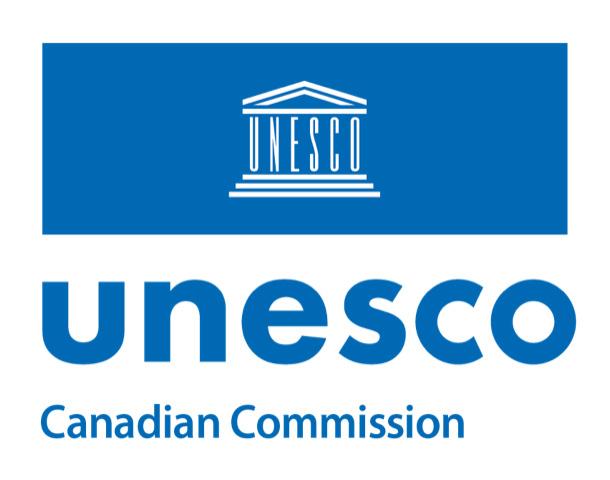
6 EDUCATION CANADA • April 2023 | EdCan Network www.edcan.ca/magazine
network voices
EDUCATION
George K. Georgiou, PhD, is a Professor in the Faculty of Education at the University of Alberta and a member of the UNESCO Canada working group on the impact of Covid-19 on education. His research focuses on early prevention and intervention of reading difficulties.
Rauno Parrila, PhD, is the founding Director of the Australian Centre for the Advancement of Literacy at Australian Catholic University, Sydney. His research examines both typical and atypical reading development and the cognitive and environmental factors affecting how we learn to read different writing systems.
Children’s Reading Skills Back on Track
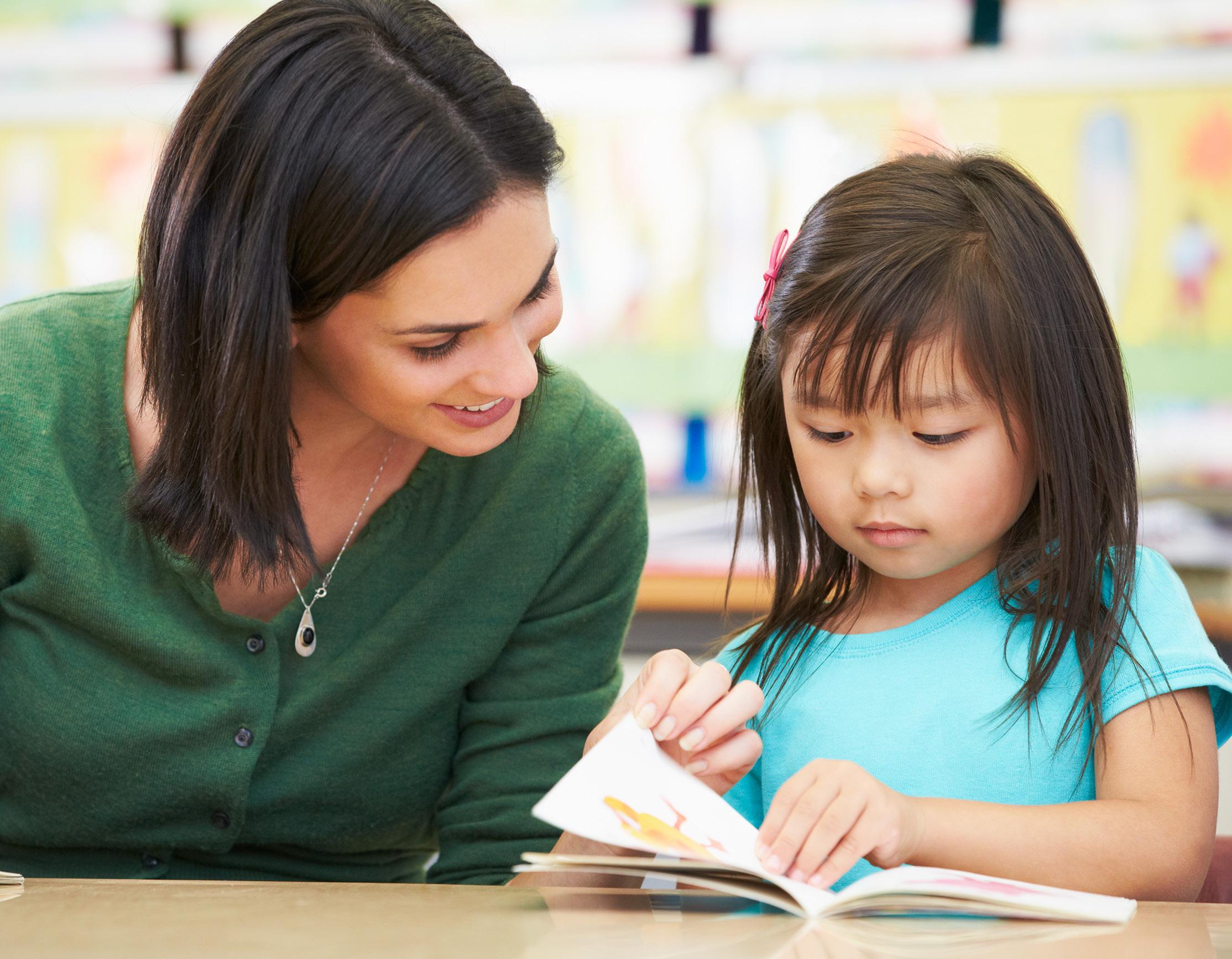
Encouraging findings from Alberta after three years of COVID-19
BY GEORGE K. GEORGIOU AND RAUNO PARRILA
IT IS NOW THREE years since governments around the world announced the shutdown of schools to protect students and teachers from COVID-19. According to UNESCO (2020), more than 1.5 billion children from more than 190 countries were sent home in March 2020 to receive instruction remotely, if at all. Since then, edu-
cators, parents, and policymakers have been interested in knowing how much the disruptions COVID-19 brought to regular reading instruction impacted children’s reading performance. In this article, we expand on a previous report on children’s reading performance during the first six months of the pandemic (see Georgiou, 2021) to
www.edcan.ca/magazine EdCan Network | April 2023 • EDUCATION CANADA 7
THE IMPACT OF COVID-19 ON
PHOTO: ISTOCK
include information from 20 K–9 schools in Alberta from September 2019 until they returned to regular classroom instruction in September 2022.
Findings from the rest of the world
The results of most published studies in different parts of the world indicate that COVID-19 had a significant impact on children’s reading performance, particularly in early grades. For example, in a recent study covering five million Grade 3 to 8 students in the U.S., Kuhfeld et al. (2023) reported that the average fall 2021 reading scores on a standardized reading measure were .09 to .17 standard deviations lower relative to same-grade scores in the fall of 2019. Compared to the growth a typical (pre-pandemic) student makes in these grades, these test score drops represent roughly a third of a school year’s worth of growth. Similarly, working with a sample of Finnish children, Lerkkanen et al. (2022) reported that the growth in reading from Grade 1 to 4 was slower for their COVID-19 cohort than for their pre-COVID-19 cohort.
The same body of research has also revealed that the effect of COVID-19 has not been equal for different groups of students. For example, students from lower socio-economic (SES) backgrounds (or students attending high-poverty schools) seem to have been influenced more than students from higher SES backgrounds. There is also some evidence that students with reading disabilities were more impacted than students without reading disabilities. Finally, Kuhfeld et al. (2022) found that in the U.S., the effect of COVID-19 was greater for Hispanic, American Indian and Alaskan Native, and Black students than for Asian American or White students.1
Findings from Canada
Evidence on how COVID-19 has impacted Canadian students is still scarce and we know of only two studies reporting on how Canadian students were affected, one conducted in Alberta and one conducted in Quebec.
The Alberta study: Georgiou (2021) compared the performance of approximately 4,000 English-speaking students from Grades 2 to 9 in September 2020 (right after the schools re-opened) to the performance of same-grade students in the three years prior to the school closures. Georgiou found that only the performance of younger children (Grades 2 and 3) was lower compared to previous years. Interestingly, the performance of older children (Grades 4 to 9) either remained the same or improved during the pandemic. On the basis of these findings, the Ministry of Education in Alberta (Alberta Education) asked schools to test all their Grade 1 to 3 students in reading and provided substantial funding to support schools in providing reading interventions to the most affected children in early grades.
The Quebec study: Côté and Haeck (personal communication, June 3, 2022) compared the performance of Grade 4 French-speaking students in Quebec using the results from the reading ministerial exam in June 2019 (prior to the pandemic) and June 2021 (a year into the
pandemic). They found a substantial decrease in the average performance of students between the two measurement points (77.3 percent in 2019 vs. 69 percent in 2021).
Back on track?
We have been studying reading development and difficulties in Alberta for the past 20 years. Because of this, we had measures in place in multiple schools to also examine the impact of COVID-19. For the purpose of this article, we examined:
• 20 schools from three school divisions in Alberta
• About 6,500 Grade 1 to 9 students assessed in September 2019, September 2020, September 2021, and September 2022
• Data on three norm-referenced assessments (Test of Word Reading Efficiency-2, Test of Silent Word Reading Fluency-2, and Test of Silent Reading Efficiency and Comprehension).
To better understand the impact of COVID-19, it is important to break down the time into three separate periods. The first time period covers September 2019 to September 2020. This time period captures the time when schools closed indefinitely after the COVID-19 outbreak and only remote instruction was available to children. The second period (September 2020 to September 2021) is the academic year when schools re-opened, but children had to quarantine for 10 to 14 days if they had COVID-19 and whole classes shifted between faceto-face and online teaching depending on the number of positive cases in each class. Finally, the third time period (from September 2021 to September 2022) is when most teaching took place face-toface and there were relatively fewer learning disruptions.
• From September 2019 to September 2020: The reading performance of students from Grades 1 to 3 declined in all tasks. The performance of students in Grades 4 to 9 remained the same or improved slightly. These results replicate those reported in Georgiou (2021).
• From September 2020 to September 2021: The performance of students in all grade levels declined and the decline was larger in reading efficiency and comprehension than in basic word reading skills. Similar results have been reported by Kuhfeld et al. (2022) for U.S. students using different measures of reading skills.
• From September 2021 to September 2022: The performance of students in all grade levels improved and was comparable to the performance in the same tasks prior to the pandemic (in September 2019).
These findings suggest that the students in these 20 schools
8 EDUCATION CANADA • April 2023 | EdCan Network www.edcan.ca/magazine
It’s important to note that evidence-based [early literacy] practices were in place in the sample schools well before COVID-19.
might be back on track in reading following three years of COVID-19 pandemic.
Four keys to recovery
There are four key factors we believe that have helped the students in this sample to get back on track. We summarize them below.
Use of evidence-based practices in the participating schools
Obviously, we wouldn’t have any data to present here unless these schools were collecting data from their students on a yearly basis using norm-referenced assessments. In addition, teachers in these schools have been participating in ongoing professional development seminars with us focusing on best practices in teaching reading, and have been sharing their experiences from field-testing different strategies as part of their communities of practice (see Georgiou et al., 2020, for more information). Principals have also been meeting regularly to discuss the results of their assessments and to identify areas in which their teachers would benefit from further professional development. It is important to note here that the evidence-based practices were in place in the sample schools well before COVID19. This means that when Alberta Education called teachers in the province to focus their instruction on foundational skills in learning to read (e.g. phonological awareness, phonics, reading fluency), the teachers in these schools did not have to change what they were already successfully doing. This likely had a positive impact on their students’ reading performance and contributed to a quicker recovery.
Early screening and intervention
Alberta Education mandated screening of all Grade 1 to 3 children using reliable and valid assessments of foundational reading skills. Traditionally, most school divisions in Alberta have been using various benchmark assessments to identify struggling readers, despite research showing that they are neither reliable nor accurate (Burns et al., 2015; Parker et al., 2015). Alberta Education did not approve these assessments for accessing additional funding. In addition, Alberta Education shared a reading intervention program with all schools in the province that included 80 lessons on phonological awareness and phonics, and asked schools to report on children’s growth over time. To our knowledge, this is the first time a province mandated early literacy screening and provided free intervention materials to all schools; both policies should continue in the future.
Funding
Alberta Education provided $45 million additional funding to schools to address any learning losses. To our knowledge, this is the largest amount spent in the country and assuming the money was used for the intended purpose (i.e. intervention), it may explain why students in our sample schools caught up quickly. Alberta Education also funded research projects on early intervention and the results of these projects provided valuable information on how to address learning losses. In one of these projects, we provided intervention to 365 Grade 2 and 3 struggling readers, and after 4.5 months of inter-
vention, 80 percent of them had improved about 1.5 years in their reading. Some of these children were in the schools included in the study reported above. Funding of evidence-based reading interventions in conjunction with frequent monitoring of students’ progress using reliable and accurate measures should continue in the future.
Discussions around evidence-based practices
The discussions taking place around the country on what should be done to address learning losses drew teachers’ attention to evidencebased practices in reading. For example, among the recommendations given to teachers through different media was one that reading researchers have long asked for: Provide systematic and explicit phonics instruction in early grades. This recommendation is now also included in the new Alberta English Language Arts curriculum for the early primary years.
THE POSITIVE RESULTS on recovery come from schools that use evidence-based early literacy instructional practices and have provided their teachers with professional development on these practices that they may not have received in their teacher education programs. At this time, we don’t yet have reliable information on COVID-19 recovery from schools that are behind in transitioning to evidencebased early literacy programs. Finally, the promising results we see in our schools in Alberta reflect positively on the policy implemented by Alberta Education. By mandating early screening and funding additional interventions, and by making reliable assessments and effective intervention programs available to schools, Alberta Education essentially acted on the recommendations provided by the Ontario Human Rights Commission’s Right to Read report. EC
NOTES
1 These are the descriptors used in the study.
REFERENCES
Burns, M. K., Pulles, S. M., et al. (2015). Accuracy of student performance while reading leveled books rated at their instructional level by a reading inventory. Journal of School Psychology, 53, 437–445.
Georgiou, G. (2021). Has COVID-19 impacted children’s reading scores? The Reading League Journal, 2, 34–39.
Georgiou, G., Kushnir, G., & Parrila, R. (2020). Moving the needle on literacy: Lessons learned from a school where literacy rates have improved over time. Alberta Journal of Educational Research, 66, 347–359. doi.org/10.11575/ajer.v66i3.56988
Kuhfeld, M., Lewis, K., & Peltier, T. (2023). Reading achievement declines during the COVID-19 pandemic: Evidence from 5 million U.S. students in Grades 3–8. Reading and Writing. doi.org/10.1007/s11145-022-10345-8
Lerkkanen, M.-K., Pakarinen, E., et al. (2022). Reading and math skills development among Finnish primary school children before and after COVID-19 school closure. Reading and Writing
https://link.springer.com/article/10.1007/s11145-022-10358-3
Parker, D. C., Zaslofsky, A. F., et al. (2015). A brief report of the diagnostic accuracy of oral reading fluency and reading inventory levels for reading failure risk among second- and third-grade students. Reading & Writing Quarterly, 31, 56-67.
UNESCO. (2020). COVID-19 impact on education
https://en.unesco.org/COVID19/educationresponse
www.edcan.ca/magazine EdCan Network | April 2023 • EDUCATION CANADA 9
THE IMPACT OF COVID-19 ON EDUCATION
From Responses to Recovery Puzzles, boats, and the COVID-19 pandemic
Lesley Eblie Trudel, PhD, is a former Assistant Superintendent of K–12 Schools, now Associate Dean in the Faculty of Education at the University of Winnipeg. She works ardently to promote the links between research and practice.
Laura Sokal, PhD, is a Professor of Education at the University of Winnipeg. She has published three books and almost 80 articles on psycho-social issues in schooling, but her favourite part of work is teaching.
BY LESLEY EBLIE TRUDEL AND LAURA SOKAL
Once close friends and colleagues, teachers Ashley, Morgan, and Mackenzie stood in their classroom doorways, their physical distance a stark reminder of the emotional distance between them now. In an attempt at building a bridge of commiseration after teaching in pandemic conditions for over a year, Ashley said, “I wish the admin would understand how this feels for us. I have never felt so discouraged and isolated. Another PD about online methods is exactly NOT what I need right now.” Morgan agreed. “What we really need is to be heard and respected – and a break. Yeah, a break would be nice. I’ve had it!” Mackenzie was silent. She had been looking forward to the PD later that day. Online teaching had been a welcome break from busi-
ness as usual, and after an initial bumpy period, she was leaning into it and feeling a sense of accomplishment. Each teacher looked at the others. The silence dragged. And then the bell rang, and it was back to work.
IN APRIL 2020, schools around the world were forced into a period of historic disruption as a result of the COVID-19 global pandemic. Similarly, in Canada, an initial few weeks of school closures evolved into several months, with schools continuing to ride the ongoing waves of the pandemic and teachers expected to pivot from in-person to remote instruction and adopt new pedagogies as required. Here we present an on-going, SSHRC-funded
10 EDUCATION CANADA • April 2023 | EdCan Network www.edcan.ca/magazine

PHOTOS: ISTOCK
Canadian study (Babb et al., 2022) that our research team began in April 2020. We queried over 2,000 Canadian teachers for almost three years during the pandemic, so that we could gain a deep understanding of their experiences, inquiring into the demands faced by teachers and the resources available to support them through this time.
Teaching during the first few months of COVID-19
Initial interview data collected from Canadian teachers early in the pandemic showed that balance was difficult to maintain (Eblie Trudel et al., 2021). Many learners had inadequate access to technology, limited home support in their language of instruction, and reduced assistance with the challenges of additional learning needs. Many parents, already strapped with work and child-care duties, were overwhelmed and unable to assist in facilitating their children’s instruction. Moreover, teachers struggled to prioritize basic student needs, create vital partnerships between schools and families, and develop the necessary confidence to deliver engaging learning through new modes of teaching.
As our research developed, findings demonstrated that teachers responded predictably to the two widely accepted theoretical models of burnout used in our study, voicing their subjective appraisals of teaching in a pandemic in remarkably diverse ways. The job demands-resources (JD-R) model (Bakker & Demerouti, 2007) allowed us to recognize that varied, but unique, experiences of teachers were leading some teachers to burnout, due to the increased demands and inadequate resources available for support. A model by Maslach and Jackson (1981) permitted us to assess the progression of burnout along a spectrum associated with periods of occupational stress, noting dimensions of exhaustion, depersonalization or cynicism, and reduced work accomplishment. We found that exhaustion could arise from excessive demands felt in a particular role and that lost efficacy could result from insufficient resources to meet such demands. Some exhausted teachers withdrew from students and colleagues, or avoided work altogether, actions recognized as depersonalization and cynicism in the burnout literature. Given that teachers’ withdrawal from students could impact student achievement and wellbeing, finding ways to reduce teacher stress and increase coping was shown to be vital for maintaining quality instruction and avoiding teacher burnout.
Unsolvable as a single puzzle
Imagining the research process akin to assembling a large puzzle, our team attempted to use traditional statistical methods to provide a concise picture of teacher coping over the course of the pandemic. However, developing a clear picture of teacher experiences proved to be challenging. Just when we thought we understood the trends, we were faced with new data that did not fit at all. It was like we were assembling a puzzle with pieces mixed in from other puzzles – and the pieces just didn’t fit. By using a new kind of statistical analysis, we found that there were, in fact, five unique puzzles that required consideration. Our findings revealed five distinct profiles (or patterns) of responses to teaching in the pandemic, each relating to different combinations of role demands as well as access to both individual
and employer-provided resources (See Figure 1).
Five puzzles
Specifically, we identified two groups of teachers who were flourishing, and we called them the “engaged” and “involved” groups. Despite experiencing moderate levels of exhaustion and perceiving high demands, teachers in both of these categories accessed a greater number of resources and demonstrated higher levels of accomplishment than other teachers in the study. Like Mackenzie, the teachers in the engaged and involved groups were supported to meet their job demands during pandemic conditions, although the teachers in the involved group were slightly more withdrawn than those in the engaged category.
A third teacher group was nearing burnout and was acknowledged as being “over-extended.” Teachers in this category, like Ashley, had a small deficit of resources compared to their work demands, and were at the “tipping point” of burnout symptoms. While they were experiencing close to the highest levels of exhaustion and feeling moderately withdrawn, they were still able to demonstrate higher levels of accomplishment. Finally, we found two other teacher groups to be experiencing moderate to high levels of exhaustion and feeling significantly withdrawn. Teachers in these groups, like Morgan, were languishing and exhibiting symptoms of burnout. We coined them “detached” and “inefficacious,” with the latter reporting the lowest levels of accomplishment of all. These findings were shared by our partners at the EdCan Network through an article and infographic
Importantly, for each group we found that it was not the number of demands or the number of resources that predicted burnout, but rather the ratio of resources to demands that predicted the level of stress and burnout perceived by the teachers in the groups. This realization challenged the thinking that teachers were “all in the same boat” during the pandemic. Some teachers were in yachts and some were in life rafts. Some had smooth sailing while others taught through a raging storm – all dependent on whether they had sufficient resources to meet the demands of their specific teaching contexts.
Solutions to the five puzzles
Subsequent work with our partners in a large Manitoba school division, allowed comparative insight between national and provincial
12 EDUCATION CANADA • April 2023 | EdCan Network www.edcan.ca/magazine
Engaged Involved Over-extended Detached Inefficacious 6 5 4 3 2 1 0 Exhaustion Depersonalization Accomplishment MBI-ES Dimension MBI-ES Mean Scor e
Figure 1: Five categories of teacher coping
data. We were alarmed to discover that 46 percent of Manitoban teachers demonstrated patterns of the two struggling groups, compared with 27 percent of teachers from across Canada. In fact, a greater proportion of Canadian teachers remained at a tipping point in the over-extended group, whereas more Manitoban teachers had already spilled over to become detached and inefficacious. With the Manitoba government aware and informed of this research, over $1 million in funding was awarded to our partners at the Canadian Mental Health Association (CMHA) (mbwpg.cmha.ca/) provincially, to address the wellbeing of individuals and organizations in the provincial education sector. CMHA established a website (careforallineducation.com) that facilitates real-time access to Wellness Specialists through phone and online chat modalities to all Manitoban education sector workers, including teachers. CMHA also developed a suite of workshops as part of a multi-level response mechanism. This initiative acknowledged that individuals, administrators, organizations, and government needed to work together to ensure that support is provided for education sector recovery and growth.
Bakker and de Vries (2021) found that with support from school organizations, teachers were more likely to sustain individual resilience while still meeting professional responsibilities. Not only could teachers freely engage with individual strategies for coping (setting boundaries with work time and space, applying healthy eating, exercise and sleep habits, and practising self-compassion) but they could also partake in systemic programs for workplace wellbeing.
For teachers who were flourishing, concurrent employer-hosted opportunities that fit the specific needs of these teachers best include:
• job coaching (increasing job control, task variety and transparency)
• mentorship opportunities
• positive role changes
• increasing resources such as professional learning to further engage in and enhance daily work.
Responding to teachers at a tipping point, languishing, or feeling role strain, individual recommendations would include:
• decreases in multi-tasking
• reducing distractions
• blocking time for priority tasks
• planning for digital downtime and rest
• focusing on non-work-related activities after working hours.
It is essential to remember, however, that employees cannot recover from stress within workplaces that demonstrate imbalances in demands and resources, so simultaneous workplace changes are essential to facilitate and encourage individual strategies that allow for recovery and replenishment. Leadership suggestions here include:
• enhanced communication and collaboration to better determine stress levels of staff
• human resource programs to support recovery and wellbeing
• policies or procedures that allow employees to disconnect from daily work and enjoy leisure time.
The key idea in this scenario is that teachers can engage in selfregulation by identifying their levels of stress and then actively select individual and organizational strategies to enhance coping and optimize wellbeing. In order to do this, however, it is vital to identify burnout as a collective rather than an individual responsibility, with interventions provided at both personal and organizational levels.
Different boats in the same storm
Holmes and colleagues (2020) endorsed the importance of understanding teacher stress as a means of supporting the education sector going forward. As one interview participant described, “Teachers were experiencing the pandemic in different ways. Some were thriving and engaging in novel aspects of teaching and technology, while others were experiencing trauma and tensions, and grieving the loss of pre-pandemic practices.” With enhanced awareness of the diversity of responses to coping during the pandemic, our research demonstrated that teachers could be assisted to understand and navigate their stressors and supports, thereby accessing additional resources as necessary to engage with or offset the strain of job demands. Furthermore, with this knowledge, school boards and other stakeholder organizations could be better prepared to provide resources and supports to help employees achieve or restore work-life balance and enhance or recover wellbeing. Ongoing monitoring and subsequent follow-up research with the CMHA is being conducted by our team to evaluate the effectiveness of both individual and organizational resources for wellbeing, as we move forward with post-pandemic recovery. We now know that teachers are not all in the same boat as they continue to navigate their teaching roles, and that a collective suite of responses will be necessary to ensure they all make it safely and successfully back to the harbour. EC
REFERENCES
Babb, J., Sokal, L., & Eblie Trudel, L. (2022). THIS IS US: Latent profile analysis of Canadian teachers’ resilience and burnout during the COVID-19 pandemic. Canadian Journal of Education, 45(2), 555–585. doi.org/10.53967/cje-rce.v45i2.5057
Bakker, A. B., & Demerouti, E. (2007). The job demands-resources model: State of the art. Journal of Managerial Psychology, 22(3), 309–328. doi.org/10.1108/02683940710733115
Bakker, A., & de Vries, J. (2021). Job Demands-Resources theory and selfregulation: New explanations and remedies for job burnout. Anxiety, Stress & Coping, 34(1). 1–21. doi.org/10.1080/10615806.2020.1797695
Eblie Trudel, L., Sokal L., & Babb, J. (2021). Teachers’ voices: Pandemic lessons for the future of education. Journal of Teaching and Learning 15(1). doi.org/10.22329/jtl.v15i1.6486
Holmes, E., O’Connor, R., et al. (2020). Multi-disciplinary research priorities for the COVID-19 pandemic: a call for action for mental health sciences. Lancet Psychiatry, 7(6), 547–560. doi.org/10.1016/S2215-0366(20)30168-1
Maslach, C., & Jackson, S. E. (1981). The measurement of experienced burnout. Journal of Occupational Behaviour, 2(2), 99–113. doi.org/10.1002/job.4030020205
Sokal, L., Eblie Trudel, L., & Babb, J. (2020a). It’s okay to be okay too. Why calling out teachers’ “toxic positivity” may backfire. Education Canada, 60(3). www.edcan.ca/articles/its-ok-to-be-ok-too
Sokal, L., Eblie Trudel, L., & Babb, J. (2020b). COVID 19: Supporting teachers in times of change. Education Canada, Infographic Series. https://edcannetwork.wordpress.com/2020/09/02/teacher-covid-survey
www.edcan.ca/magazine EdCan Network | April 2023 • EDUCATION CANADA 13
It was not the number of demands or the number of resources that predicted burnout, but the ratio of resources to demands.
Pandemic and Language Resilience in a Francophone Minority Context
BY PHYLLIS DALLEY AND HANNAH SUTHERLAND
FROM AN ECOLOGICAL PERSPECTIVE inspired by Bronfenbrenner’s theory of human development, resilience can be defined as a process initiated by systems when they find themselves in the face of adversity (Ungar, 2018). This article examines the resilience of students during the COVID-19 pandemic, with a focus on language resilience in a francophone minority context.
According to Ungar’s model (2018), each human being is a system in and of itself, while also being a constituent of other systems. A student is therefore a system interacting with others – their school, their community(ies), family, etc. It is by interacting with these systems that students construct themselves, build their sense of the world and participate in (re)producing other systems.
Resilience is a process that aims to return the individual system1 to wellness or well-being. The COVID19 pandemic has placed entire nations in a context of
health adversity. We have seen how they have been able to mobilize various internal resources (financial means, knowledge, attitudes, capacities) and external resources (vaccines, knowledge, allies) within a network of international systems.
In the midst of this upheaval, families, parents, children, students, teachers and school administrators mobilized internal and external resources in a process of resilience that began with school closures and the creation of an “ad hoc” virtual school space. We have therefore been able to confirm the extent to which the school is not only a place of learning but also, in terms of supervising children, a concomitant system of family and social systems. Moreover, the role of schools in reducing social inequalities has been confirmed when family systems have taken on more responsibility for the schooling of children. On the one hand, for example, we saw the
14 EDUCATION CANADA • April 2023 | EdCan Network www.edcan.ca/magazine
Phyllis Dalley is a Professor in minority contexts education at University of Ottawa. She is also founder and Director of Chantiers d’actions pour des francophonies inclusives (CARFfI.ca).
Hannah Sutherland is a doctoral student at the Education Faculty of University of Ottawa.
THE IMPACT OF COVID-19 ON EDUCATION
Individual (knowledge, attitudes, age, gender, financial/linguistic/ cultural capital, capacities)
Family, community, friends, school, recreational activities, community centre, neighbourhood...
School board, media, hospital, extended family, municipality Society, policies, cultural norms, dominant languages
lower availability of Internet and computer equipment in low-income households or in those located far from the country’s urban centres. On the other hand, families with the necessary internal resources created “school cells” and hired a qualified teacher to ensure their children’s continued schooling, while the school system struggled to meet its teacher staffing needs and other children were doing minimal hours of virtual schooling, with or without adult supervision or support at home. This is reminiscent of the creation of playgroups by some parents to ensure the availability of a French-language space for their preschoolers in an Anglo-dominated setting, as well as the trend noted in research on school choice: only some families actively choose their children’s school. Thus, the mobilization of internal and external resources by a system, in this case a family system, depends largely on the availability, accessibility and relevance of such resources.
In a francophone minority context, it is also important to take into account accessibility to the French language during the pandemic and afterwards. We already know that in the most Anglo-dominated

www.edcan.ca/magazine EdCan Network | April 2023 • EDUCATION CANADA 15
Figure 1: The interaction of human systems
(Adapted from Ungar, 2018, and Bronfenbrenner, 1979)
PHOTO: ISTOCK
francophone and Acadian communities, the school is the only public space where the French language enjoys a higher official status than English, although the latter enjoys a very high social status in student interactions. This is the case, for example, in Halifax (Liboy and Patouma, 2021), Toronto (Heller, 1994; Heller, 2006) and Ontario more generally (Gérin-Lajoie, 2004), Manitoba (Cormier, 2020) and Vancouver (Levasseur, 2020). The introduction of the Civic Community School concept developed by FNCSF (Fédération nationale des conseils scolaires francophones) in 2011 and the identification of the sociolinguistic role of the education system as a major issue by AEFO (Association des enseignantes et enseignants franco-ontariens) in 2022 confirmed the centrality of the school for community language resilience in an Anglo-dominated context. Within the school, students find spaces for social interaction that are conducive to contextualized language production and reproduction. The closure of schools and community centres therefore placed young people in a context of language adversity.
The pandemic has had a significant impact on the mental health of adolescents (Vaillancourt et al., 2021), particularly because of the social isolation that has significantly reduced peer contact. Even when health measures have been relaxed to allow social distancing, young people in a minority setting may have encountered difficulties in getting together with their francophone friends if these friends were scattered over an area beyond the limits of their neighbourhood. Indeed, although some historical francophone or Acadian communities occupy a well-defined geographic space (the Brayon population of the City of Edmundston, the Acadian population of Pubnico or the Franco-Ontarian population of Hearst, for example), their lives are for the most part intertwined in a municipality with the lives of an English-speaking majority, thus diminishing the opportunities to communicate in French. Under such conditions, a decision becomes necessary with respect to mobilizing internal and external resources that can support language resilience in French.
Data was collected in various provinces: in Ontario and Prince Edward Island in conjunction with communications sent to various groups in the school system; in New Brunswick in connection with the research component of the Canadian Playful Schools Network; and in Nova Scotia as part of a Master’s thesis. The data shows that the closure of schools during the COVID-19 pandemic had a significant effect on the availability and accessibility of external and internal resources relevant to the language resilience of some young French speakers. In our conversations with teachers and parents in Ontario and Prince Edward Island, we heard that some children’s ability and motivation to speak French decreased during the pandemic. Teachers in some elementary school settings noted that a greater number of students who did not attend daycare because of the pandemic entered school with little or no knowledge of the French language. Teachers at one school were interviewed at the annual ACELF conference and estimated that 70 percent of students did not speak French when they arrived at school in September 2022.
Secondary school students had the habit of switching from English to French when in the vicinity of a teacher in the school hallways; after two years of interrupted copresence, however, this automatic reflex seems to have generally disappeared when students returned to the classroom. Teachers have reported that some students simply refuse to speak French in the classroom, even with staff. A Master’s study of three secondary school students in Nova Scotia informs us about the factors that may have contributed to such changes and describes how in-person school acts as a concurrent system supporting students’
language resilience process (Sutherland, 2022).
Three secondary school seniors from schools across Nova Scotia participated in individual online narrative conversations during the second year of the COVID-19 pandemic. Despite distinct sociolinguistic profiles, each one testified to the importance of school for their language resilience (Sutherland, 2022). The in-school resources which they mobilized were (1) access to academic French in French courses, (2) legitimization of the local variety of French (Acadjonne) by certain staff members and (3) extracurricular activities. The French language school thus provides these students with three spaces in which various language resources and norms of communication in French can circulate: interaction in academic French, in Acadjonne and in the language of young people. Although Acadjonne was available to two of these students at home, with one of them speaking French closer to the academic standard with her parents, the pandemic greatly reduced their daily access to academic French and interactions with their peers in French.
When their schools were closed, students in French-language schools had access to a reduced number of classes. French classes were maintained, but accessibility to academic French was reduced as the trend shifted from participative education to lecture-style teaching. The individuals Sutherland met noted in particular the relevance of interaction in the French classroom to their access to academic language. Considering that, for two students, this linguistic variety was not legitimate within their family and community settings but was required for their legitimacy as francophones outside these environments, interactions in academic French proved to be a necessary resource for post-secondary language resilience for these students.
In addition, students testified to the importance of a Frenchlanguage space, as their propensity to use the dominant language with their peers meant that, in the absence of school-organized extracurricular activities, they turned to social media to communicate with their friends. However, they used English mostly, if not exclusively, in the digital socialization space. For these individuals, the school closure during the pandemic entailed the loss of spaces of social interaction relevant to the production and contextualized language reproduction of the various forms of French.
However, unlike a growing number of young people living in a minority setting, those met by Sutherland had access to Frenchlanguage resources in their families and in their respective communities. They were also among the young people who mobilized extracurricular school activities as a resource for their resilience in general and for their language resilience in particular. In Ontario, parents from a minority background but who use French at home and mobilize French language resources in their interactions with their
16 EDUCATION CANADA • April 2023 | EdCan Network www.edcan.ca/magazine
In-person school acts as a concurrent system supporting students’ language resilience process.
children noted that their children spoke and read more frequently in French. This seems to have resulted in an improvement in their French vocabulary and a greater ability to move from a situation of translinguistic communication (i.e., the creative mobilization by biplurilingual persons of all their linguistic resources to create meaning and communicate a message) to a unilingual situation. Could it be that, by keeping their children away from a socialization space between young people where French is little used (the school hallways, for example), school closures contributed to these students’ linguistic resilience in French?
In a minority context, the surrounding society cannot ensure that students and their families will have sustained access to the language and linguistic resources distributed by the French-language school. Consequently, the French-language school offers great potential as an external resource for students’ language resilience. Under current conditions, it is not able to fully carry out this role in the context of a pandemic or e-learning. Moreover, some anecdotal data suggests that the French-language school contributes negatively to the language resilience of some students. Thus, there is still much to be learned about the interaction between the school and students’ other language ecology systems, and about the contribution of this interaction to short- and long-term language resilience. EC
NOTE
1 Gauvin-Lepage and Lefebvre (2010) focus their research on family resilience. In this context, internal resources belong to the family while external resources are located in the systems around them.
REFERENCES
Bronfenbrenner, U. (1979). The ecology of human development: Experiments by nature and design. Harvard University Press, Cambridge.
Cormier, G. (2020). School perspectives and definitions of linguistic identity in a minority environment: How do French-language schools respond to the needs of 21st century students faced with the many social, cultural and demographic changes underway? Éducation et francophonie, 48(1), 53-72. doi.org/10.7202/1070100ar
Gérin-Lajoie, D. (2004). La problématique identitaire et l’école de langue française en Ontario. Francophonies d’Amérique, (18), 171–179. doi.org/10.7202/1005360ar
Heller, M. (1994). Crosswords: Language, education, and ethnicity in French Ontario. Mouton de Gruyter.
Heller, M. (2006). Linguistic minorities and modernity: A sociolinguistic ethnography (2nd ed.). Continuum.
Levasseur, C. (2020). Being multilingual and Francophone: identity representations and positioning of francization students in Vancouver. Éducation et francophonie, 48(1), 93-121. doi.org/10.7202/1070102ar
Liboy, M.-G., & Patouma, J. (2021). L’école francophone en milieu minoritaire estelle apte à intégrer les élèves immigrants et réfugiés récemment arrivés au pays? Canadian Ethnic Studies Journal, 53(2), 23-40.
Sutherland, H. (2022). De l’insécurité linguistique à la résilience linguistique : le rôle de l’école de langue française dans la formation de la résilience linguistique des adolescents. [Master’s thesis, University of Ottawa]. ResearchuO.
https://ruor.uottawa.ca/handle/10393/43860
Vaillancourt, T., Beauchamp, M., et al. (2021). Children and schools during COVID19 and beyond: Engagement and connection through opportunity. Royal Society of Canada.
https://rsc-src.ca/sites/default/files/C%26S%20PB_EN.pdf
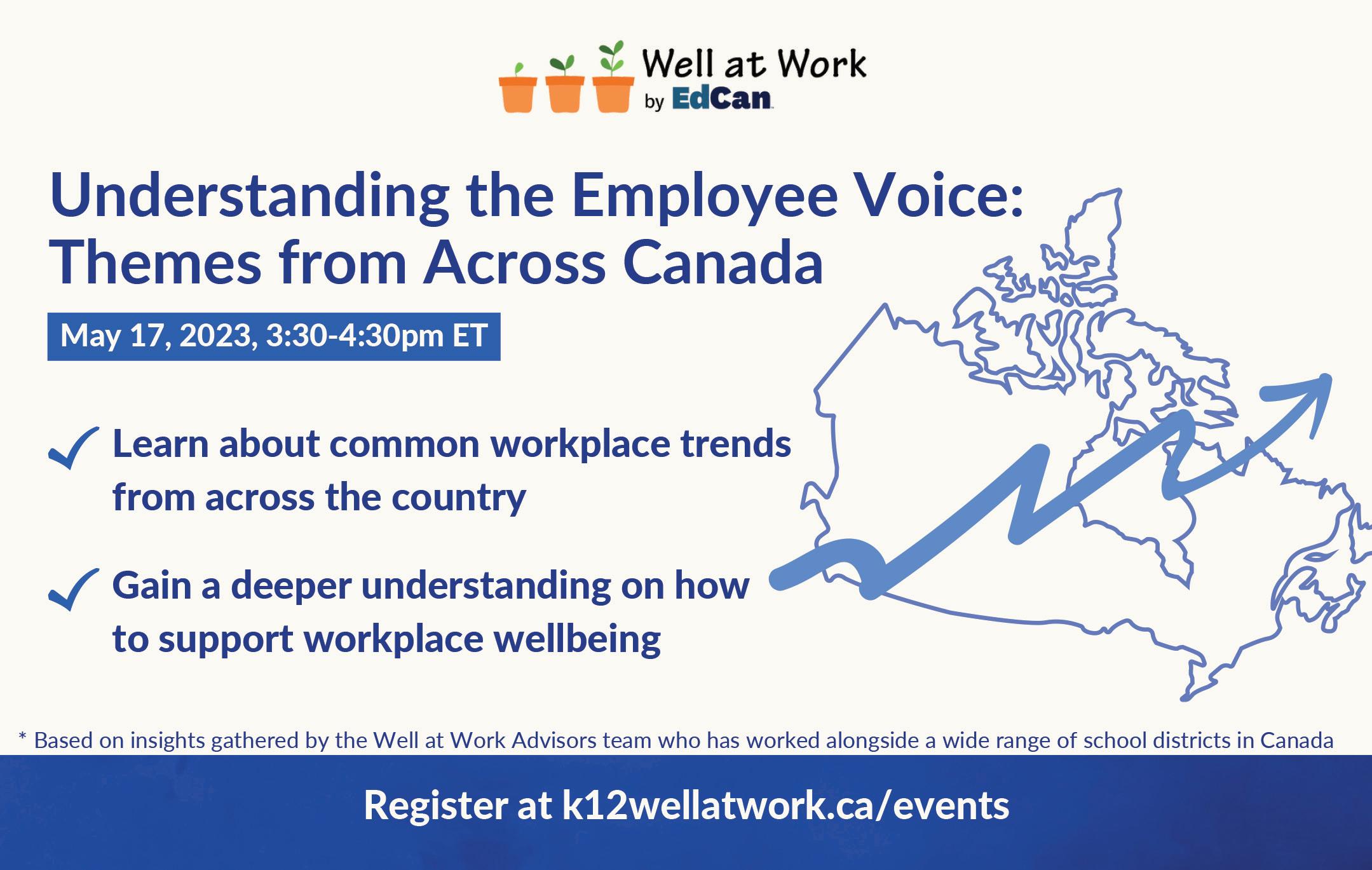
Ungar, M. (2018). Systemic resilience: Principles and processes for a science of change in contexts of adversity. Ecology and Society, 23(4).
doi.org/10.5751/ES-10385-230434
www.edcan.ca/magazine EdCan Network | April 2023 • EDUCATION CANADA 17
THE IMPACT OF COVID-19 ON EDUCATION
COVID-19 and the Learning Loss Dilemma
Louis Volante, PhD, is a Professor of Education
Governance and Policy
Analysis at Brock University, Professorial Fellow at UNU-MERIT / Maastricht Graduate School of Governance, and current President of the Canadian Society for the Study of Education (CSSE). Professor Volante’s research is primarily focused on global education governance, comparative education policy, international education surveys and policy diffusion, inequality in educational opportunities and achievement, and impact evaluation of policies and programs.
Don A. Klinger, PhD, is the Pro Vice-Chancellor of Te Wānanga Toi Tangata Division of Education, University of Waikato, having previously been at Queen’s University, Kingston. His research explores measurement theory and the use of assessments to support teaching, learning and policy across education contexts, with a focus on identifying and reducing learning inequities exposed through large-scale measures of educational outcomes.
danger of catching up
behind
BY LOUIS VOLANTE AND DON A. KLINGER
ALTHOUGH STATISTICS VARY across provinces, Canadian schools in general were closed for a total of 51 weeks during the pandemic – placing the nation in the highest bracket globally for school closures (UNESCO, n.d.). Unsurprisingly, provincial policymakers across Canada continue to be concerned about the negative short- and long-term impacts of the disruptions created by these closures on students’ learning and have been focusing their attention on improving achievement in traditional content areas such as reading, writing, mathematics, and science. The dominant political and popular media discourse is that students have fallen behind and need to “catch up” in these foundational subject areas. Certainly, international research suggests that this concern is well-founded, and that students’ learning has been significantly disrupted during the pandemic.
Learning loss within and outside of Canada
International research is beginning to document the learning losses students experienced due to school closures, shifts toward online and hybrid learning, and other impacts associated with successive waves of the
pandemic. Although these studies are relatively sparse, a limited number of Western nations such as the Netherlands (Engzell et al., 2021), Germany (Depping et al., 2021), Belgium (Maldonato & De Witte, 2021), and the U.S. (Bailey et al., 2021) suggest learning essentially stalled during the pandemic. These studies also suggest that the pandemic may have exacerbated existing inequalities, with lower socio-economic status (SES) students falling even further behind their more affluent peers. Collectively, the emergent literature suggests that learning and the academic resilience of students globally have been particularly threatened during the pandemic (Volante & Klinger, 2022a).
Unfortunately, Canadian large-scale assessment research, which is used to draw reliable and comparative measures of student achievement and system-level judgments, has been particularly constrained during the pandemic. Indeed, the administration of international, national, and provincial assessments have all been adversely impacted, with numerous cancellations during the initial waves of the pandemic. Further, those assessment programs that did occur met with high levels of
18 EDUCATION CANADA • April 2023 | EdCan Network www.edcan.ca/magazine
The
only to fall
non-participation, impacting sampling designs. These challenges have made it difficult to make provincial comparisons of student achievement. Those studies that do exist are confined to select geographical contexts such as Toronto (Toronto District School Board, 2021), or offer predicted losses extrapolated from summer learning research (Aurini & Davies, 2021). Collectively, the available research in Canada has been unable to quantify, with any level of certainty, the pandemic’s impact on students’ achievement.
Nevertheless, Canadian education systems, including higher education settings, are reporting important gaps in student learning, suggesting that learning losses have occurred for students in K–12 and beyond. International organizations such as the Organisation for Economic Co-operation and Development (2020) and the United Nations Educational, Scientific and Cultural Organization (2022) have also reported that lower SES students and their families have been unable to secure the necessary resources needed to succeed in online and hybrid learning environments amidst the turmoil created by the pandemic. These challenges are also well documented in popular media stories across Canada and reflected in the policy interventions adopted by various provincial governments to try to support our most vulnerable student groups. Nonetheless, the relative success of these efforts and interventions has not been measured.
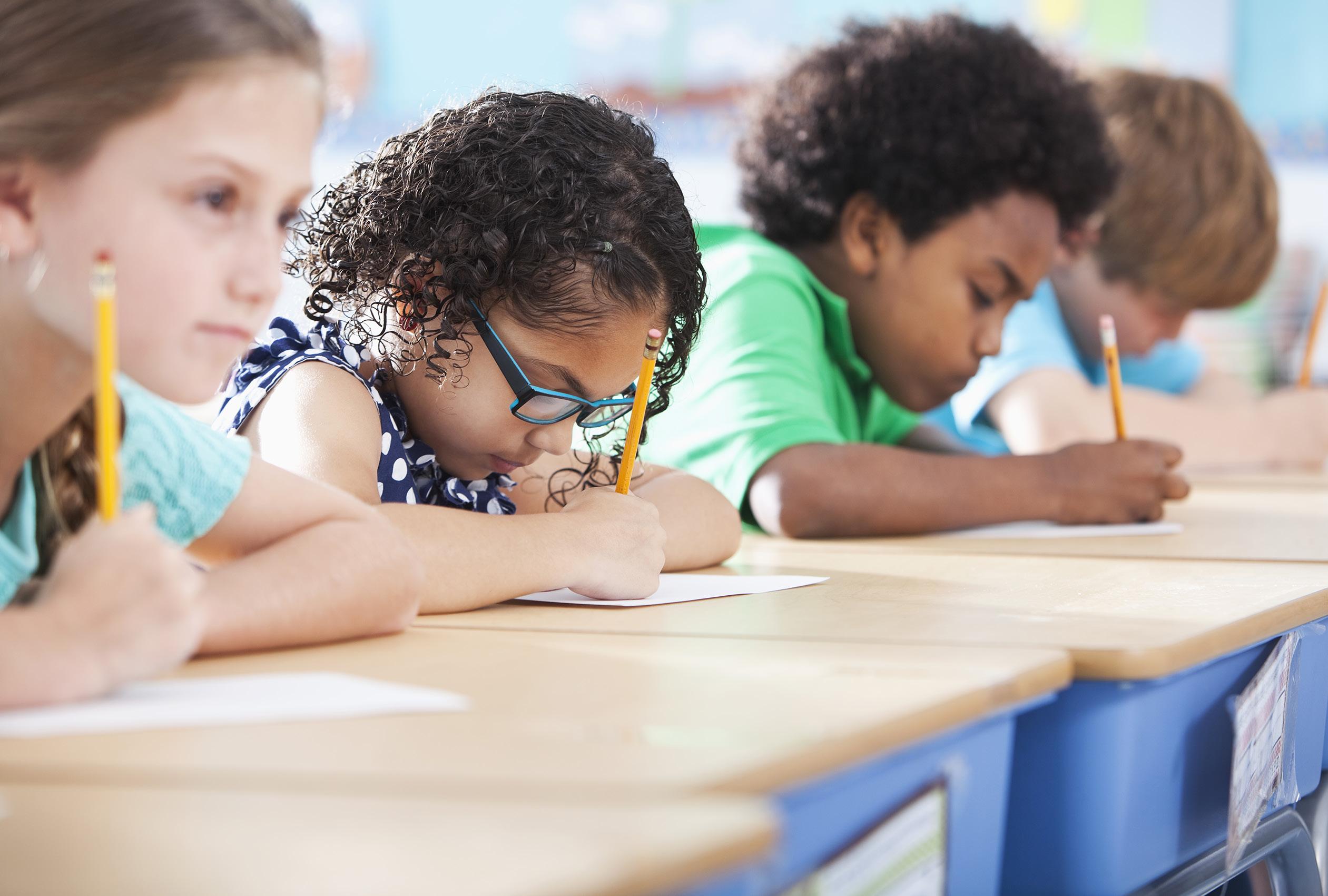
Policy trends across Canada
One of our recent studies provided a pan-Canadian analysis of educational policy developments from January 2020 to December 2021 that were specifically related to academic resilience in the wake of the initial waves of the pandemic. Not surprisingly, our findings suggested greater attention was devoted to academic issues – namely learning outcomes in cognitive domains – with relatively fewer policies and resources to support mental health and general physical wellness (Volante et al., 2022c). Our analysis also suggested that there was also a general lack of policy differentiation in terms of how specific resources and supports were to be directed within provincial educational jurisdictions to help support at-risk students. Without such differentiation, we have argued that the resources developed will not be fully realized, and will undoubtedly fail to stem the growing disparities between low- and high-SES student populations that have been amplified by the pandemic.
Collectively, our policy research also underscores the importance of reconsidering how provincial education systems operate to achieve positive outcomes for students and how these outcomes might be “measured” and evaluated. Although a great deal of work is already underway by provincial testing bodies, large-scale assessment measures currently do not offer a multifaceted picture of student develop-
www.edcan.ca/magazine EdCan Network | April 2023 • EDUCATION CANADA 19
PHOTO: ISTOCK
ment. Conversely, international achievement measures such as those administered by the OECD and/or the International Association for the Evaluation of Educational Achievement (IEA), provide background questionnaires that attempt to capture student-, school-, and system-level factors that may be related to student outcomes. As an example, these international measures increasingly include factors and outcomes that could be classified as non-cognitive skills, drawing attention to the importance of non-cognitive and mental/ physical wellness outcomes.
Challenging the dominant discourse
One would be hard-pressed to find any educational stakeholder group that does not recognize the importance of student achievement in traditional subject areas such as reading, writing, mathematics, and science. Nevertheless, the pandemic has highlighted how achievement in traditional cognitive domains offers a necessary, but incomplete picture of the pressing challenges that face Canadian youth. As Volante, Klinger, and Barrett (2021) noted in a previous Education Canada article, Canadian children reported disturbing trends in relation to mental health and general wellness. Similarly, the promotion of noncognitive skills such as growth mindset represents an increasingly important cadre of key attributes that contribute to resilient students, schools, and education systems in general (Volante & Klinger, 2022b).
face in their lifetimes. Rather than return to status quo approaches that emphasize a narrow set of achievement outcomes, this critical epoch in our collective history offers an opportunity to rethink our approaches to large-scale education reform to provide a more nuanced recognition of the skills and attributes required to face the challenges of the future. Certainly, any student, parent, or teacher will tell you that more than academic content was lost during the pandemic – capturing and addressing the multifaceted complexity of this “loss” requires a new conception of what quality education looks like in a post-COVID world. Failing to recognize the latter could undoubtedly result in students catching up in academic content, only to fall behind in the non-cognitive skills they require for further success. It is time for us to look for ways to link provincial, national, and international assessments and surveys in order to obtain the data needed to examine the complexity of learning that supports the whole child. EC
This research is supported by the Social Sciences and Humanities Research Council of Canada (SSHRC).
REFERENCES
Aurini, J., & Davies, S. (2020). COVID-19 school closures and educational achievement gaps in Canada: Lessons from Ontario summer learning research. Canadian Review of Sociology, 58(2), 165–185. doi.org/10.1111/cars.12334
Bailey, D. H., Duncan, G. J., Murnane, R. J., & Yeung, N. A. (2021). Achievement gaps in the wake of COVID-19. Educational Researcher, 50(5), 266–275. doi.org/10.3102%2F0013189X211011237
Depping, D., Lücken, M. et al. (2021). KompetenzständeHamburger Schülerinnen vor und während der Corona-Pandemie [Alternative pupils’ competence measurement in Hamburg during the Corona pandemic]. DDS – Die Deutsche Schule, Beiheft, 17, 51–79. www.pedocs.de/volltexte/2021/21514/pdf/DDS_Beiheft_17_2021_Depping_et_al_ Kompetenzstaende_Hamburger.pdf
Engzell, P., Frey, A., & Verhagen, M. D. (2021). Learning loss due to school closures during the COVID-19 pandemic. Proceedings of the National Academy of Sciences of the United States of America, 118(17), 1-7. www.pnas.org/content/pnas/118/17/e2022376118.full.pdf
Thus, provincial policymakers are faced with an important dilemma. Namely, to develop a comprehensive vision of student learning and wellbeing that emphasizes cognitive (i.e. reading, writing, mathematics, science achievement), non-cognitive (i.e. learning habits, self-beliefs, growth mindset), and general wellness in the face of dominant historical and political ideologies that have focused almost exclusively on standards-based education reform. Indeed, standards-based reform and achievement of the “three R’s” (reading, writing, arithmetic), has largely driven large-scale reform agendas in much of the Western world for more than half a century (Volante et al., 2022d). In spite of the concerns and evidence that have arisen with respect to the impact of the pandemic, every provincial jurisdiction in Canada continues to adhere to a standards-based reform model that emphasizes a hierarchy of subject areas and achievement outcomes. The importance of other critical factors and outcomes may be acknowledged, but receives little if any formal attention, and there is little effort to build on the information being collected by international assessments that now include such measures.
Rethinking large-scale reform
It is often written that adversity is a catalyst for growth and change. Certainly, the last several years have likely presented the most formidable adversity that many students, families, and teachers may
Maldonato, J. E., & De Witte, C. (2021). The effect of school closures on standardised student test outcomes. British Educational Research Journal. doi.org/10.1002/berj.3754
Organisation for Economic Co-operation and Development (2020). The impact of COVID-19 on student equity and inclusion: supporting vulnerable students during school closures and school re-openings. OECD Publishing.
https://oecd.org/education/strength-through-diversity/OECD%20COVID-19%20 Brief%20Vulnerable%20Students.pdf
UNESCO. (n.d.). Dashboards on the Global Monitoring of School Closures Caused by the COVID-19 Pandemic.
https://covid19.uis.unesco.org/global-monitoring-school-closures-covid19
Volante, L., & Klinger, D. A. (2022a). PISA, global reference societies, and policy borrowing: The promises and pitfalls of academic resilience. Policy Futures in Education. https://journals.sagepub.com/doi/10.1177/14782103211069002
Volante, L., & Klinger, D. A. (2022b, January 27–28). Assessing non-cognitive skills to promote equity and academic resilience [Paper presentation]. Advancing Assessment and Evaluation Virtual Conference.
https://aaec2022.netlify.app/_main.pdf
Volante, L., Klinger, D. A., & Barrett, J. (2021). Academic resilience in a post-COVID world: a multi-level approach to capacity building. Education Canada, 61(3), 32–34.
Volante, L., Lara, C., Klinger, D. A., & Siegel, M. (2022c). Academic resilience during the COVID-19 pandemic: a triarchic analysis of education policy developments across Canada. Canadian Journal of Education, 45(4), 1112–1140.
Volante, L., Schnepf, S., & Klinger, D. A. (Eds.) (2022d). Cross-national achievement surveys for monitoring educational outcomes: Policies, practices, and political reforms within the European Union. Publications Office of the European Union. https://data.europa.eu/doi/10.2760/406165
20 EDUCATION CANADA • April 2023 | EdCan Network www.edcan.ca/magazine
Large-scale assessment measures currently do not offer a multifaceted picture of student development.
Challenges and Opportunities Student perspectives on the impact of COVID-19
 BY FIONA SHEN AND RAEESA HOQUE
BY FIONA SHEN AND RAEESA HOQUE
SCHOOLS PLAY AN INTEGRAL PART in the lives of children and youth. Not only is this a space for intellectual development, but it is also where many social skills and core competencies are acquired. During the past three years, provinces and territories implemented a variety of measures to curb the spread of COVID-19, including school closures and remote learning. While these measures were focused on reducing the number of COVID-19 cases and deaths, there have been other consequences and impacts on the lives of students.
We are still trying to understand the impact of the pandemic on students, but we do know that there were
huge repercussions throughout all education systems across Canada. Challenges included, but are not limited to, staff and student mental health, increased inequalities between learners, staff shortage and chronic attendance problems, learning loss, cancellation of sports and extracurricular activities, and adapting to online learning. There were also, however, a few opportunities that emerged: enhanced teachers’ digital skills, learning outside the classroom, Indigenous land-based education, prioritizing opportunities for authentic learning, and improved curricula in some jurisdictions.
It is important to recognize students’ intersectional
www.edcan.ca/magazine EdCan Network | April 2023 • EDUCATION CANADA 21
Fiona Shen is an aspiring writer, intersectional feminist, and activist currently in Grade 11 at Havergal College in Toronto, Ont.
Raeesa Hoque is a student from Collège Jeanne-Sauvé in Winnipeg, Man., who actively participates in all that she can. She enjoys new experiences and tries to make the most of everything she puts her mind to.
IMPACT OF
EDUCATION
THE
COVID-19 ON
PHOTO: ISTOCK
identities and varying circumstances when discussing the impact of COVID-19 on students. We should not generalize the experiences of all youth. Not all communities, or students, faced the same impact of COVID-19.
Here, we share our experiences during the pandemic. These reflections only represent our individual experiences and not all students’ experiences.
Online learning
Fiona: It was January 2020 for me when my school announced that we would be doing classes online. Until that point in my life, I had never used Zoom or Google classroom. In a week, my peers and I were thrown into an unfamiliar world.


lessons engaging, these lessons were just not as effective.
For example, in Grade 9 science, we had to learn about the different colours of flames. In a pre-pandemic classroom, students would participate in elaborate experiments and see the different flames at school. In our new class setting, the teacher displayed different pictures of the flames on his screen and explained them one by one. We were unable to experience the bright colours of the flame and experience the excitement. As a result, the information from the class was not deeply impressed upon us.
Raeesa: Learning online was a challenge at times. From poor internet connections disrupting our classes, to needing to constantly help my siblings who were often confused after their lessons, to staring at a screen for prolonged periods, online learning had many flaws. I found that fewer people spoke and gave answers to questions during online classes, which made things harder for teachers. Due to less student participation, classes felt longer and got boring at points. It was especially sad when the teacher had to wait for someone to answer their question. The flow of the class wasn’t as interesting or engaging, which affected students’ learning and interest.
On the plus side, learning from the comfort of my home was better for me, since I was in my own learning space. I got to explore and get used to using technology more often for school tasks, which was helpful since in the future most of us will use apps on our devices to complete our assignments and projects.
Lack of structure, need for more independence
The class was just an hour of looking at black screens with occasional emoji reactions from half-asleep students. Instead of interactive learning, we were asked to watch pre-recorded lectures, usually on Zoom, by teachers. As much as teachers tried their best to make
Fiona: We used to have structured class schedules with strict expectations, like arriving to class on time and being there for attendance. However, as online classes rolled out, there was no one there to ensure we joined the online classes, and in many instances, classes were cancelled due to an unstable network. Because classes weren’t as effective, I had to figure out ways to learn on my own, so I found myself
22 EDUCATION CANADA • April 2023 | EdCan Network www.edcan.ca/magazine
I had to learn to be responsible for myself and manage my time independently to complete all my assignments and work at home.
Fiona Shen
Raeesa Hoque
PHOTO: RAEESA HOQUE
PHOTO: COURTESY FIONA SHEN
trying to watch crash-course YouTube videos and Khan Academy. Many classmates also resorted to these sources of information. Over time, we felt a disconnection between the teachers and us because they were no longer the people we went to for concerns and inquiries.

Raeesa: During the pandemic, without a teacher being there to make sure I did my work, I had to learn to be responsible for myself and manage my time independently to complete all my assignments and work at home. I also learned the importance of communicating with teachers. We were able to chat and text with teachers online, and I learned to be the one responsible for communicating with my teachers for help, because they are not able to help me if I don’t ask them.
Social impacts
Raeesa: For me, school has always been the place where I can participate in different activities like sports, arts, and clubs, and it has provided me with many opportunities. I missed out on many in-person activities, such as school assemblies and playing on certain sports teams due to the pandemic.
Fiona: Looking at the greater picture, the pandemic took away the chance for many students to discover their passions. I believe that passion is discovered through meaningful encounters with peers and teachers. With the pandemic, courses that many used to enjoy became mundane and not enjoyable. There were fewer interactions with teachers, less face-to-face communication. In the crucial years of interest exploration in Grades 8, 9, and 10, some were unable to explore their interests to the full extent. However, the pandemic helped me appreciate the resources I have in my life. Pre-pandemic, there were no breaks. I was involved in hockey, rugby, multiple extracurricular classes, debate, and more. Right after school, my mom would drive us to all sorts of extracurricular programs. When we got home, my sister and I would quickly eat and go to our rooms to do homework. In contrast, after the pandemic hit a lot of classes were cancelled or were moved online, which gave my family a lot more family time. I was able to have more conversations with my mom and understand her immigration story to Canada. This gave me a stronger sense of family and appreciation for the things my mom has sacrificed to build a life in Canada.
Youth leadership
Fiona: The pandemic brought out a huge surge of youth activists and youth leaders. There were many rising issues regarding
educational resources, technology, and homelessness. Youth were inspired to speak up and aid their community members after seeing how the pandemic impacted their local communities. On a personal level, I run a non-profit organization, United Speakers Global, that aims to make public speaking resources more accessible to youth. Just after I joined the organization, the pandemic hit and the initiative became completely online – which at first seemed a problem. However, with an increased demand for these programs, we reached more students not only in the GTA but also in 11 different cities globally. Through this organization, I met youth leaders in Kuwait, Shanghai, Zambia, the U.S., and other places.
Last words
Raeesa: While the pandemic had its negative impacts on my learning, there were also some perks and learning opportunities. I like to think of it as a matter of perspective. I could have looked at the pandemic as an obstacle I was unable to overcome. Instead, I looked at the pandemic as a learning opportunity and used all the obstacles that came my way as stepping stones to opening my mind to different perspectives and ways of learning. The challenges helped me move forward instead of halting my path. In the end, it is our perception that forms our life and the way we choose to live it. EC
www.edcan.ca/magazine EdCan Network | April 2023 • EDUCATION CANADA 23
The class was just an hour of looking at black screens with occasional emoji reactions from half-asleep students.
THE IMPACT OF COVID-19 ON EDUCATION
Sylvana Côté, PhD, is a psychologist by training, a full Professor in the School of Public Health at the Université de Montréal and a researcher at CHU Sainte-Justine. She directs the Research Group on Psychosocial Maladjustment in Children (GRIP) and the Observatory for Children’s Education and Health(OPES), and co-directs the Network on the Perinatal Determinants of Child Health.
Simon Larose, PhD, is a full Professor in the Faculty of Education at Université Laval and is responsible for the Education axis of the Observatory for Children’s Education and Health (OPES). He has conducted numerous research studies with elementary, secondary and college students on such topics as school transitions, reception, integration and inclusion, mentoring and tutoring, and the psychosocial determinants of school success.
Catherine Haeck, PhD, is a full Professor in the Department of Economics at the Université du Québec à Montréal. She specializes in the economics of education and labour economics and directs the Skills axis at the Centre interuniversitaire de recherche en analyse des organisations (CIRANO). Her research focuses on the human capital of children and youth and on the intergenerational transmission of income and education.
Effects of School Disruptions in the Years 2020 and 2021 on the Learning of Quebec Children
BY SYLVANA CÔTÉ, CATHERINE HAECK, SIMON LAROSE, AND COLLABORATORS
COVID-19 AND THE MEASURES put in place to limit its spread have affected the quantity and quality of teaching and services offered by schools. These measures include the complete closure of Canadian schools as of mid-March 2020, emergency distance learning and support, the creation of classroom bubbles, and the temporary closure of classes to control outbreaks. According to the Conseil supérieur de l’éducation du Québec (2021), school disruptions could lead to an impoverishment of the knowledge and skills acquired by children, particularly among the most vulnerable. From an economic perspective, learning delays among elementary and secondary school children in Canada could result in losses amounting to nearly $2,500 billion in GDP over 80 years (Hanushek & Woessmann, 2020).
A growing body of data regarding the effects of aca-
demic disruptions on learning became available during the years 2021-2023. A pre-recorded systematic review on the topic indicates that outcomes vary according to the social and school context in which the disruptions occurred, and how they were managed. According to this meta-analysis of 42 studies in 15 countries, a substantial overall learning deficit (Cohen’s d = -0.14, 95% confidence interval -0.17 to -0.10) emerged early in the pandemic and persisted over time. Learning deficits are particularly significant among children from underprivileged socioeconomic backgrounds. These deficits are also higher in mathematics than in reading, and in middle-income countries than in high-income countries.
Although the effects of COVID-19 on learning are of concern to the Canadian government, there appears to be little national data available. In Quebec, the Observatory
24 EDUCATION CANADA • April 2023 | EdCan Network www.edcan.ca/magazine
for Children’s Health and Education (OPES), in collaboration with the Ministère de l’Éducation, collected data to measure the reading skills of Quebec children completing Grade 4 of elementary school in 2021. Between March 2019 and June 2021, these children experienced 15 months of school disruptions caused by the health measures that were implemented to counter the spread of COVID-19.
The goal was to compare the learning level of children in 2021 to that of Grade 4 children in 2019 (who had not been exposed to the pandemic). We tested the possibility that learning gaps between cohorts can vary by child gender, reading-risk status and socioeconomic background, and by the number of days classes were closed.
Methodology
In April 2021, all French-language and public school service centres (n=60) in the province were invited to participate in a study to understand the impact of school closures on reading performance in Grade
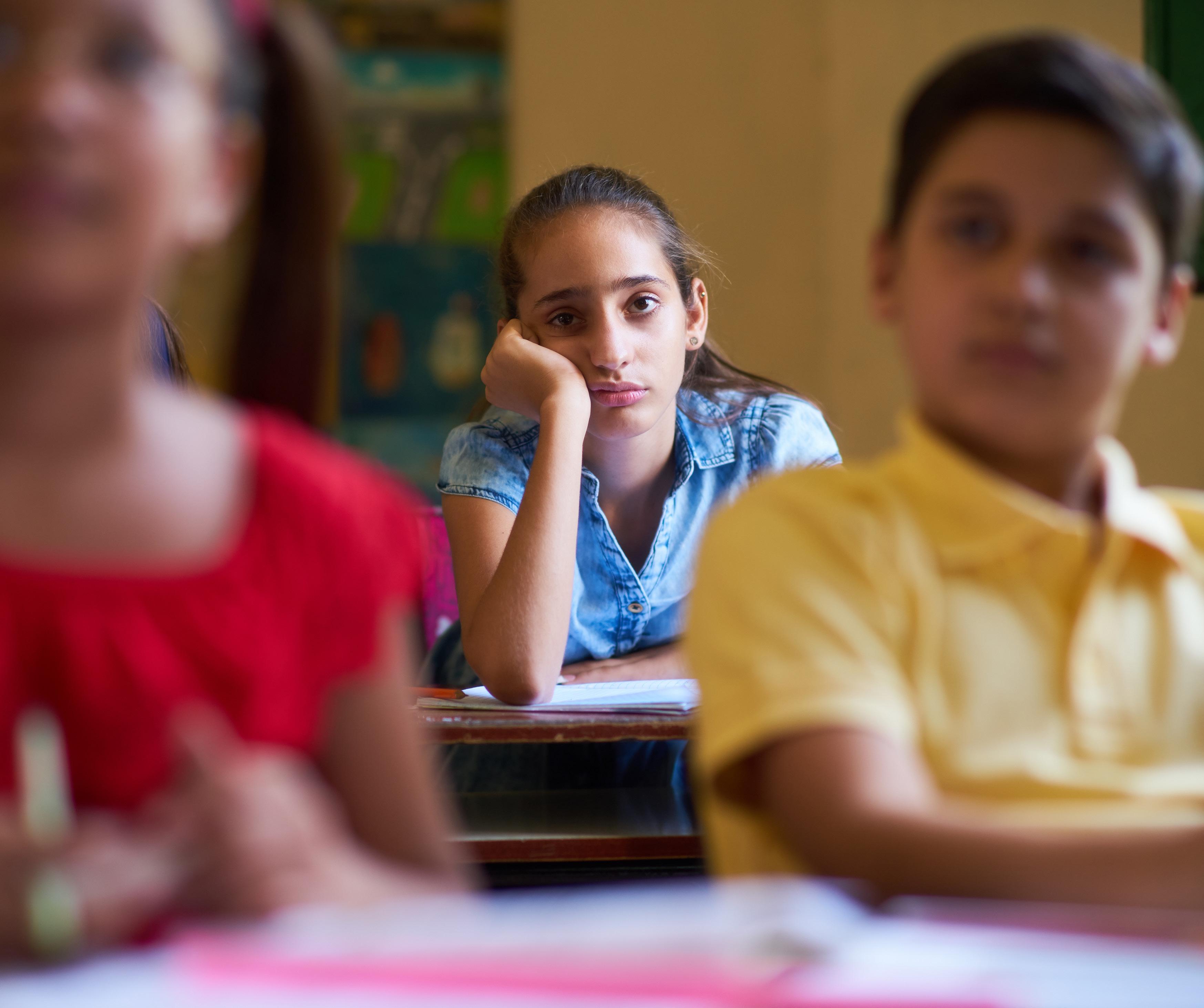
4. School participation was voluntary.
The analyses included 10,317 students in 2021 and 13,669 students in 2019 from the same schools, for a total of 23,986 students.
Learning was measured using the compulsory French test (language of instruction). This was the same test that was administered prior to the COVID-19 pandemic, i.e., the June 2019 test.
The Grade 4 reading assessment featured two tasks: the literary text task and the ordinary text task. Only one of the two tests was administered in this study: the ordinary text test. This is a 2.5-hour test in which students read an ordinary 1,000-word text and respond to 12 questions with short answers. The tests were corrected centrally, with each copy being corrected twice by employees of the Direction de la sanction des études (DSE) of the Ministère de l’Éducation du Québec.
The child’s gender and the school’s Socio-Economic Environment Index1 (IMSE) were used as independent variables.
www.edcan.ca/magazine EdCan Network | April 2023 • EDUCATION CANADA 25
PHOTO: ISTOCK
The number of class closure days during the 2020-2021 school year (fewer than 15 days closed or more than 15 days) was used in the analyses.
Calculation of learning gaps
To estimate learning gaps between 2019 and 2021, we used a linear model that included school fixed effects. The model is as follows:
Yiet=ɑ +β Cohortt2021 + γBoyi + θe + εiet
where Yiet is the score of student i in school e in year t. The term Cohortt2021 is an indicator variable equal to one in 2021 and zero in 2019. School fixed effects are collected by θe. The student’s gender is controlled via Boyi and εiet is the error term. Standard deviations were calculated to account for the strongest correlation in outcomes among children in the same school (cluster analysis). Thus, the coefficient β captures the effects of school disruptions under certain assumptions. The possibility of interactions between IMSE, performance and gender was investigated.
Our results
There was an average 8.3 percentage point decline in reading between June 2019 and June 2021. The size of this gap varied according to the children’s test performance: it was high for the bottom decile of performance (20 pp); medium for the middle deciles (10 pp at the 4th decile); and zero for the top 2 deciles of performance. Boys had slightly more pronounced losses than girls.
performance (20 pp2); medium for the middle deciles (10 pp at the 4th decile); and zero for the top two performance deciles. These results suggest that children who were already strong in reading, i.e., those with scores in the top 20%, had not experienced learning losses 15 months after the onset of the pandemic. On the other hand, children who were weak in reading, i.e., those with scores in the bottom 20%, did experience significant learning losses (15-20 pp). The performance gaps were larger (by 1.3 pp) for boys.
The results suggest that students with academic difficulties are particularly in need of the specialized and structured environment offered by the school to support them in their learning. They highlight the crucial role of teachers and school professionals as advocates for equal opportunity. Moreover, studies of classroom management practices in a context of uncertainty (such as during a pandemic) suggest that less attention is paid to vulnerable groups during times when everyone is experiencing a low sense of safety. As the years 20202021 have placed unusual demands on school staff, it is possible to anticipate that the return to greater normality in 2022 will provide the support needed for everyone’s success.
The results of Betthauser et al. (2023) indicate greater losses for children from disadvantaged backgrounds. Although our results show that children from disadvantaged schools had lower scores than others in both 2019 and 2021, we did not detect that learning losses were greater for children from disadvantaged schools, but rather for children who had lower reading levels. Note that since the disadvantage index is correlated with performance, it is plausible that the differential results by performance obscured the difference in the disadvantage index.
It is also possible that we did not find an impact from deprivation due to the fact that the index to which we had access was measured at the school level and not at the child/family level. The composition of schools is in fact very heterogeneous in terms of family disadvantage. Thus, even in disadvantaged neighbourhoods, the variable may not capture individual differences in the level of deprivation, whereas the performance variable does. This explanation also applies to the income threshold, which is a school-level variable.
Special considerations and recommended follow-ups
This study has important methodological strengths, including the standardized nature of the test, the large sample size (n=23,986), the diversity and representativeness of the socioeconomic status of participating schools, and the comparison of children in the same schools in 2019 and 2021. The within-school comparison type controls for a large number of confounding variables, including school management, school staff and the children who attend the schools.
School staff and promotion of equal opportunities
We compared reading skills as measured through a ministry test (n=10,880, 9-10-year-old students) with children in the same schools (n=13,669) that had administered the same test in 2019. Results indicated an 8.3% difference in student reading scores between 2019 (prepandemic) and 2021 (after 15 months of exposure to the pandemic). Thus, while the average score was 77.7% in 2019, it was 69.3% in 2021. The size of this standard deviation varied depending on how well the children performed on the test. It was high for the bottom decile of
The results captured the full direct and indirect effects of pandemic disruption on the acquisition of reading skills, not just the effects of academic disruption. It should be noted that the context in which the tests were taken may have influenced the results: the test in 2021 was not compulsory and was not entered on report cards. Although teachers were instructed to prepare their students for the test by following standard practices, children’s motivation and stress levels may have been different in 2021 than in 2019. The lower level of stress may have had a positive effect on the performance of some children. For others, the fact that grades were not reported on the report card may have decreased motivation.
The results underscore the importance of conducting a long-term review of the learning trajectories of Canadian students following the
26 EDUCATION CANADA • April 2023 | EdCan Network www.edcan.ca/magazine
2019 2021 1 2 3 4 5 6 7 8 9 10 100 80 60 40 20 Performance Deciles Av erag e scor e on re ading exam Average Scores
Fig. 1. Average reading test scores for 2019 and 2021 by performance decile
2019-2021 academic disruptions. Researchers have shown that a 0.2 standard deviation increase in academic achievement is associated with higher earnings (2.6% over a life course) and better labour market participation (Chetty, Friedman, & Rockoff, 2014a, 2014b). It should be noted that this study shows greater effects for the most vulnerable students, suggesting increased social inequalities in academic performance. Monitoring of standardized test scores over the next several years is necessary to quantify changes in gaps, if any, and to identify strategies to narrow them. EC
We would like to thank our collaborators: Karine Trudeau, PhD, and William Sauvé.
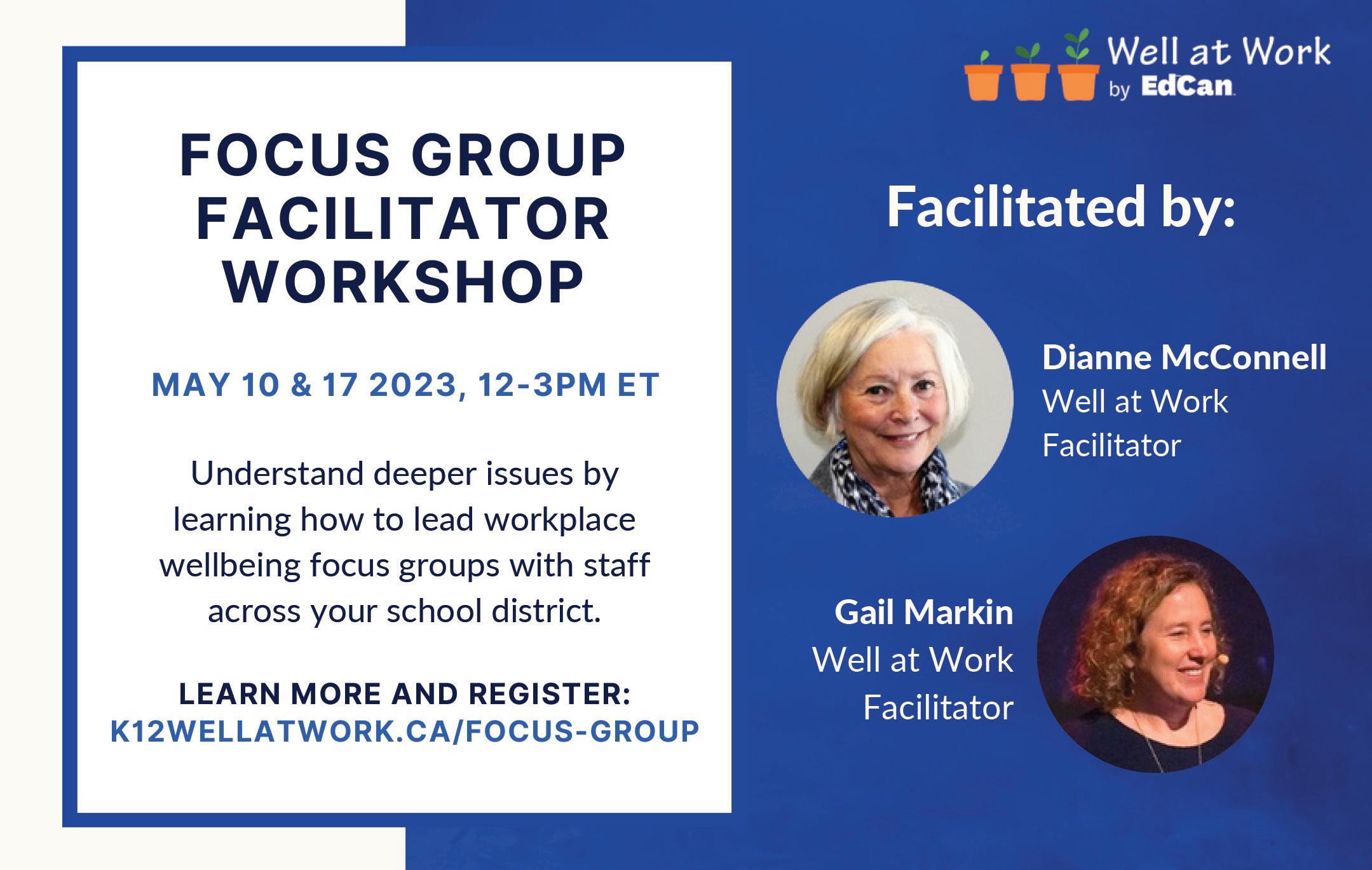
NOTES
1 The school’s Socio-Economic Environment Index (IMSE): This is an index made up of two variables, the mother’s undereducation and the parents’ inactivity, which emerge as the strongest explanatory family variables of a child’s non-achievement in school. A student’s IMSE is the IMSE of the population unit from which he or she comes, while the school’s IMSE is the average of all students’ IMSEs.
2 Percentage point
REFERENCES
Blainey, K. (2020). The impact of lockdown on children’s education: a nationwide analysis. chrome-extension://efaidnbmnnnibpcajpcglclefindmkaj/https://www. risingstars-uk.com/media/Rising-Stars/Assessment/Whitepapers/RS_ Assessment_white_paper_1.pdf
Chetty, R., Friedman, J. N., & Rockoff, J. E. (2014a). Measuring the impacts of
teachers I: Evaluating bias in teacher value-added estimates. American Economic Review, 104(9), 2593-2632.
Chetty, R., Friedman, J. N., & Rockoff, J. E. (2014b). Measuring the impacts of teachers II: Teacher value-added and student outcomes in adulthood. American Economic Review, 104(9), 2633-2679.
Engzell, P., Frey, A., & Verhagen, M. D. (2021). Learning loss due to school closures during the COVID-19 pandemic. Proceedings of the National Academy of Sciences, 118(17), e2022376118.
Goldhaber, D., Imberman, S. A., et al. (2022). To what extent does in-person schooling contribute to the spread of Covid-19? Evidence from Michigan and Washington. Journal of Policy Analysis and Management, 41(1), 318-349.
Haelermans, C., Jacobs, M., et al. (2021). A full year COVID-19 crisis with interrupted learning and two school closures: The effects on learning growth and inequality in primary education. doi.org/10.31219/osf.io/78fje
Hanushek, E. A., & Woessmann, L. (2020). The economic impacts of learning losses. OECD Work document on education, 225, OECD Edition, Paris.
Maldonado, J. E., & De Witte, K. (2022). The effect of school closures on standardized student test outcomes. British Educational Research Journal, 48(1), 49-94.
Milanovic, K. (2022). The residual impact of educational disruption on primary school attainment by spring 2022. 22 RS Assessment, School Dash. https://risingstars-uk.com/media/Rising-Stars/Assessment/Whitepapers/ Spring22_RS_Assessment_white_paper.pdf
Quebec, É. (2021). GDUNO.
https://prod.education.gouv.qc.ca/gdunojrecherche/rechercheOrganisme. do;jsessionid=3sZe_Q8EMu68DHnFStbDpDDcFQszamaRzuTZLx4hSeKmIfn7A GRh!1100596104!-1697553619?methode=recherche
Quebec, M. d. l. e. d. (2021). Indice de milieu socio-économique (IMSE). www.education.gouv.qc.ca/enseignants/aide-et-soutien/milieux-defavorises/agirautrement/indice-de-milieu-socio-economique-imse
www.edcan.ca/magazine EdCan Network | April 2023 • EDUCATION CANADA 27
‘COVID Taught Us a Lot about Priorities’
Robin Liu Hopson, PhD, is the Director of Policy and Research at People for Education. She holds a PhD in Curriculum, Teaching, and Learning from OISE/UT, an MA in French Literature from McMaster University, a BEd from OISE/UT, and a BA&Sc from McMaster University.
Jasmine HodsonBautista is a Research Analyst at People for Education. She holds an MA in Educational Leadership and Policy from the Ontario Institute for Studies in Education, a BA in Sexual Diversity Studies from the University of Toronto, and a BFA in Film Production from York University.
BY ROBIN LIU HOPSON AND JASMINE HODGSON-BAUTISTA
“Ongoing staffing challenges, lack of daily staff supports for post-pandemic recovery, daily bus cancellations, lack of system navigation and social work for all families, and a focus on ‘catching up’ when massive structural issues continue to be major challenges. The idea that we are ‘back to normal’ seems to reign, yet every day is a challenge for staff and families. This places incredible pressure on administrators and staff who consistently attend work, further burning out essential staff. With labour challenges at the forefront and possible strikes, it remains unseen how much more the system can bear.” – Elementary school principal, Northern Ont.
THE START of the 2022-23 school year was the closest to normal that students, families, and educators have experienced since September 2019 – but how are schools, educators, and students really doing? Three years into the COVID-19 pandemic, the newest findings from People for Education’s Annual Ontario School Survey (AOSS) provide valuable insights. This article will focus primarily on the data collected from the 2022-23 AOSS,1 which received responses from 1,044 principals across all 72 publicly funded school boards in the province.
When the pandemic first shut down schools in March 2020, the list of challenges that emerged seemed end-
less. There now exists a substantial body of research documenting how the relentless pivoting between no school, virtual school, hybrid school, and eventually inperson school triggered a domino effect of issues that included families troubleshooting technology, juggling remote learning and work, and navigating perpetually evolving health and safety protocols (People for Education, 2021a). None of us had ever gone through a global pandemic before, so it was natural to be focused on the logistics of COVID-19: monitoring positive case counts, screening tools, social distancing, and never leaving the house without a mask – or at all. In the meantime, people’s mental health and wellbeing were progressively being impacted by feelings of anxiety, isolation, or depression, to name just a few (Vaillancourt et al., 2021).
The first AOSS conducted after the arrival of COVID-19 immediately shone a light on the toll that the pandemic had taken, specifically on the wellbeing of school principals. More than half of the 1,173 principals who responded during the 2020-21 school year disagreed or strongly disagreed that their levels of stress felt manageable (People for Education, 2021b). This same finding occurred in the following 2021-22 school year, along with principals’ concerns about the mental health and wellbeing of students and staff (People for Education, 2022). At this point in time, principals’ perceptions about the availability of
28 EDUCATION CANADA • April 2023 | EdCan Network www.edcan.ca/magazine
Three years into the pandemic, what kind of supports do Ontario schools need?
THE IMPACT OF COVID-19 ON EDUCATION
CLASS Cancelled
Source: People for Education’s 2020-21 and 2021-22 Annual Ontario School Surveys (AOSS)
Note: The 2020-2021 AOSS consisted of 3 components: fall 2020 survey, spring 2021 survey, and spring 2021 interviews.
school resources to support staff and student mental health and wellbeing were mixed:

• 43% of principals agreed or strongly agreed that they had the necessary supports for student mental health and wellbeing; 37% disagreed or strongly disagreed.
• 35% of principals agreed or strongly agreed that they had the necessary supports for staff mental health and wellbeing; 37% disagreed or strongly disagreed.
However, in October 2022, when asked to indicate the level of support needed from boards and the Ministry of Education for recovery from COVID-19, the vast majority of schools (91%) reported that they require some or more support for mental health and wellbeing, with almost half (46%) reporting that they need a lot of support.
At the beginning of the pandemic, most of the focus in schools was on COVID-19 safety and the logistics of remote learning; three years into the pandemic, mental health and wellbeing supports have emerged as a top priority. Numerous principals shared insights about the specific challenges they are witnessing in the current school year.
www.edcan.ca/magazine EdCan Network | April 2023 • EDUCATION CANADA 29 Fall 2020 Survey 2021-22 Survey Neither agree nor disgree Agree Disagree Strongly disagree Strongly agree 30% 25% 34% 33% 15% 20% 5% 4% 18% 16% 40% 35% 30% 25% 20% 15% 10% 5% 0% “My recent levels of stress at work feel manageable.”
Figure 1: Year-over-year levels of stress among Ontario school principals, 2020 vs. 2021-22
ILLUSTRATION: ISTOCK
2022-23
“Children are excited to be back at school and there is an energy in the building. That said, many students have never experienced school pre-COVID and as such, are needing support in basic expectations regarding how to behave at school. We are noticing significant self-regulation challenges in primary; anxiety and fears of coming to school in junior; and a lot of sexualized /swearing/inappropriate language in our intermediates. And all grades struggling with conflict resolution skills.” – Elementary school principal, GTA
“Student needs have increased significantly due to COVID-19: selfregulation, literacy, numeracy, mental wellness. Due to the impact of COVID-19 many students are experiencing many more challenges. These challenges are being met as best we can with the resources we have. Human resources are the most important type of resource.” – Elementary school principal, GTA
Although mental health and wellbeing was identified as the area where schools feel that support is most needed, staffing was also consistently underscored as a critical issue. This finding is not surprising, given that:
“Supporting increased children’s mental health needs with no increases in resources stresses the staff and leads to increased absenteeism. The lack of replacement staff (especially for Educational Assistants (EAs) and designated Early Childhood Educators (DECEs)) causes this problem to snowball.” – Elementary school principal, southwestern Ont.
The lack of sufficient staff has been regularly highlighted over the past three years (People for Education 2021a; 2022). Early in 2022, a wave of the highly transmissible Omicron variant prompted an investigation into staff absences across numerous school boards and found that the number of daily unfilled teaching jobs was, on average, steadily increasing (Teotonio & Rushowy, 2022). School boards used various strategies to cover staffing shortages, such as removing the caps on the number of days worked by retired teachers, permitting student teachers to work, assigning teachers classes to cover during their planning time, and principals stepping back into classrooms.
These survival tactics, however, did not come without a cost to the mental health and wellbeing of school staff and students alike. When asked if there were any challenges so far in the current 202223 school year, one elementary school principal in northern Ontario wrote:
“People are burning out way more quickly post-COVID, partly due to staffing challenges; learning and mental health needs of students are exacerbated post-COVID; the staff shortage impact on daily triage of student needs because of illness and no one to cover; having all expectations of a ‘normal everything open year’ without allowing educators to build back up before being expected to go all out for everything.”
The finding that 91% of Ontario schools need some or more support for mental health and wellbeing supports is inextricably tied to the finding that 82% of Ontario schools reported needing some or more support for school support staff. After all, one of the primary ways of addressing mental health and wellbeing is with more staff who specialize in this area. An elementary school principal in southwestern Ontario explained, “Full-time mental health care workers are required in schools to be present and available to support students and families on a DAILY basis, and to offer support for staff who are struggling to deal with the class dynamics erupting from mental health challenges.”
While 78% of schools expressed needing some or more support for teaching staff, only 19% noted needing a lot of support, which is markedly less than the 35% of schools who expressed needing a lot of support for school support staff (e.g. educational assistants, administrators, custodians, etc.) (See Figure 2). This finding is significant, given recent events related to job action and labour negotiations for education workers in the province (McKenzie-Sutter, 2022). While teaching shortages do exist, there is currently a higher demand for education support workers. One elementary school principal in southwestern Ontario described the situation: “Staffing shortages are leading to a crisis in education. Addressing the shortages across all employee groups has to be a priority for the government.”
As we look ahead to the remainder of the 2022-23 school year, it is essential to consider what actions are necessary to address the needs of Ontario’s publicly funded schools. Here are some ideas suggested by principals:
• Focus on funding human resources, especially support staff for mental health and wellbeing.
• “Some students are really struggling; however, we are not seeing an increase in supports – do better with less seems to be the refrain.” – Elementary school principal, GTA
• “Where extra supports and monies should be funnelled into inperson schools, year-over-year we have more students and fewer staff. This year, the ‘tutoring’ funds being delivered directly to families/privately would be much better used by adding human resources to the day-to-day school staff.” – Elementary school principal, GTA
• Increase access to family and community supports.
• “Greater access to social work support, behaviour support services, and system navigation for families. Greater support is needed for community support agencies who service schools but have also been otherwise impacted by C-19.” – Elementary school principal, northern Ont.
30 EDUCATION CANADA • April 2023 | EdCan Network www.edcan.ca/magazine
Mental health & well being supports School support staff Teaching staff Technology & Internet connectivity 0% 10% 20% 30% 40% 50% 60% 70% 80% 90% 100% 46% 30% 15% 7% 2% 35% 27% 19% 13% 5% 19% 35% 24% 16% 5% 13% 22% 27% 24% 15% A lot of support needed Support needed A little support needed No support needed Some support needed
Figure 2: Principal perceptions of the level of support needed from school boards and the Ministry of Education for education recovery from COVID-19,
Source: People for Education’s 2022-23 Annual Ontario School Survey
• Recognize how difficult the pandemic has been on school communities.
• “Fewer new initiatives in the next three to five years as we work to re-establish benchmarks and define our ‘new’ or ‘next’ normal!”
– Elementary school principal, GTA
• “Real and meaningful recognition of how hard the last 2+ years have been on students and staff.” – Secondary school principal, GTA
• “Teachers and support staff are exhausted. They returned from summer break somewhat reinvigorated and more optimistic, but energy has not returned to pre-pandemic levels. Folks are tired, and the trauma of the last three years will take some time to overcome.” – Secondary school principal, southwestern Ont.

Three years into the pandemic, COVID has taught us the importance of mental health and wellbeing, as well as the incredibly huge role that schools play in our lives. If public education is the foundation of our society and the key to solving many of society’s current problems, it is crucial to learn from the challenges of the past few years and get our priorities right as we plan for a happier, healthier, and more hopeful future. As one elementary school principal from southwestern Ontario put it:
“A recovery plan for a global pandemic, hmm… I think it is an opportunity to rethink some aspects of public education. Could be a great opportunity.” EC
NOTE
1 The 2022–2023 AOSS is the 26th annual survey of elementary schools and 23rd annual survey of secondary schools in Ontario.
REFERENCES
McKenzie-Sutter, H. (2022, November 4). What you need to know about the Ontario education workers’ strike. Global News.
https://globalnews.ca/news/9253376/ontario-cupe-education-worker-strikeexplained
People for Education. (2021a). Challenges and innovations: 2021-20 annual report on Ontario schools
https://peopleforeducation.ca/wp-content/uploads/2021/10/2020-21-AOSS-FinalReport-Published-110721.pdf
People for Education. (2021b). Ontario principals’ challenges and well-being: Annual Ontario School Survey 2021
https://peopleforeducation.ca/wp-content/uploads/2021/02/People-forEducations-report-on-Ontario-Principals-Challenges-and-Wellbeing-AOSS2021. pdf
People for Education. (2022). A perfect storm of stress: Ontario’s publicly funded schools in year two of the COVID-19 pandemic https://peopleforeducation.ca/wp-content/uploads/2022/05/People-forEducation_A-Perfect-Storm-of-Stress_May-2022.pdf
Teotonio, I. & Rushowy, K. (2022, February 7). ‘Really severe challenges’: Ontario school boards struggle with unprecedented staff absences. The Toronto Star. www.thestar.com/news/gta/2022/02/07/really-severe-challenges-ontario-schoolboards-struggle-with-unprecedented-staff-absences.html
Vaillancourt, T., Szatmari, P., Georgiades, K., & Krygsman, A. (2021). The impact of COVID-19 on the mental health of Canadian children and youth. FACETS, 6(1), 1628–1648. doi.org/10.1139/FACETS-2021-0078
www.edcan.ca/magazine EdCan Network | April 2023 • EDUCATION CANADA 31
Marion Deslandes
Martineau is a doctoral student in education at UQAM, having previously earned a bachelor’s degree in teaching secondarylevel French and a master’s degree in didactics. She is also a student researcher at the UNESCO Chair in Curriculum Development.
Patrick Charland, PhD, is a full Professor in the Department of Didactics, a co-holder of the UNESCO Chair in Curriculum Development at UQAM, and Director of the Institute of International Studies in Montreal. He has developed expertise in analyzing educational systems, as well as in initial training at the elementary, secondary and university levels, both in Quebec and internationally.
Quebec Elementary and Secondary School Teachers’ Perceptions of the Effects of COVID-19 on Their Students
BY MARION DESLANDES MARTINEAU, PATRICK CHARLAND AND COLLABORATORS
IT IS NOW INCREASINGLY CLEAR that the school closures that began in the spring of 2020 due to the COVID-19 pandemic have had and continue to have a significant impact on school environments and everyone within them. UNESCO (2022) estimates that more than 1.5 billion young people have been affected by the COVID19-related education crisis. This crisis has apparently further weakened education systems that were already vulnerable, due in part to such factors as staff shortages, the unsatisfactory quality of teaching and learning, or inequalities related to gender, ethnic origin, language, socio-economic status or disabilities (UNICEF, 2015). Although the effects of this crisis are beginning to be understood, more research and field data are needed to better understand them and to better guide reconstruction efforts (Donnelly and Patrinos, 2022).
Our study
The overall goal of our study, conducted by the UNESCO Chair in Curriculum Development (UCCD) in partnership with the Ministère de l’Éducation du Québec (MEQ), was
to improve our understanding of the effects of the COVID19 crisis on school environments in Quebec. Specifically, the project aimed to describe the impact of COVID-19 on:
1) school organization and facilities; 2) students; and 3) teachers. In this article, we will focus on teachers’ perceptions of the negative effects that COVID-19 has had on their students.
Where does our data come from?
Conducted in two phases with elementary and secondary teachers from three school service centres (SSCs), our mixed-method study sought to measure changes in the effects of COVID-19 on various dimensions. Nearly 500 teachers responded to an online survey in the fall of 2020, and nearly 350 did so in the spring of 2021. Among these respondents, there were also volunteers who took part in semi-structured interviews in the spring of 2021 to further explore some of the issues addressed in the questionnaires.
The questionnaires asked teachers to rate the situation at their school, first for the beginning of the school
32 EDUCATION CANADA • April 2023 | EdCan Network www.edcan.ca/magazine
THE IMPACT OF COVID-19 ON EDUCATION
year (for fall data collection) and then for the second half of the school year (for spring data collection). At both times, teachers quantitatively assessed, among other things, the extent to which COVID-19 had negatively impacted their students, specifically their learning, autonomy, collaboration, problem-solving skills, attentiveness, and organizational capability.
The quantitative results thus obtained were supported by qualitative data. For the fall of 2020, this support came from the responses to an open-ended question in the online survey, where teachers were asked to name the three most significant areas in which COVID-19 had negatively affected their students. For the spring of 2021, the qualitative data consisted of the points raised by teachers participating in the interviews.
Key negative effects of COVID-19 on students according to teachers
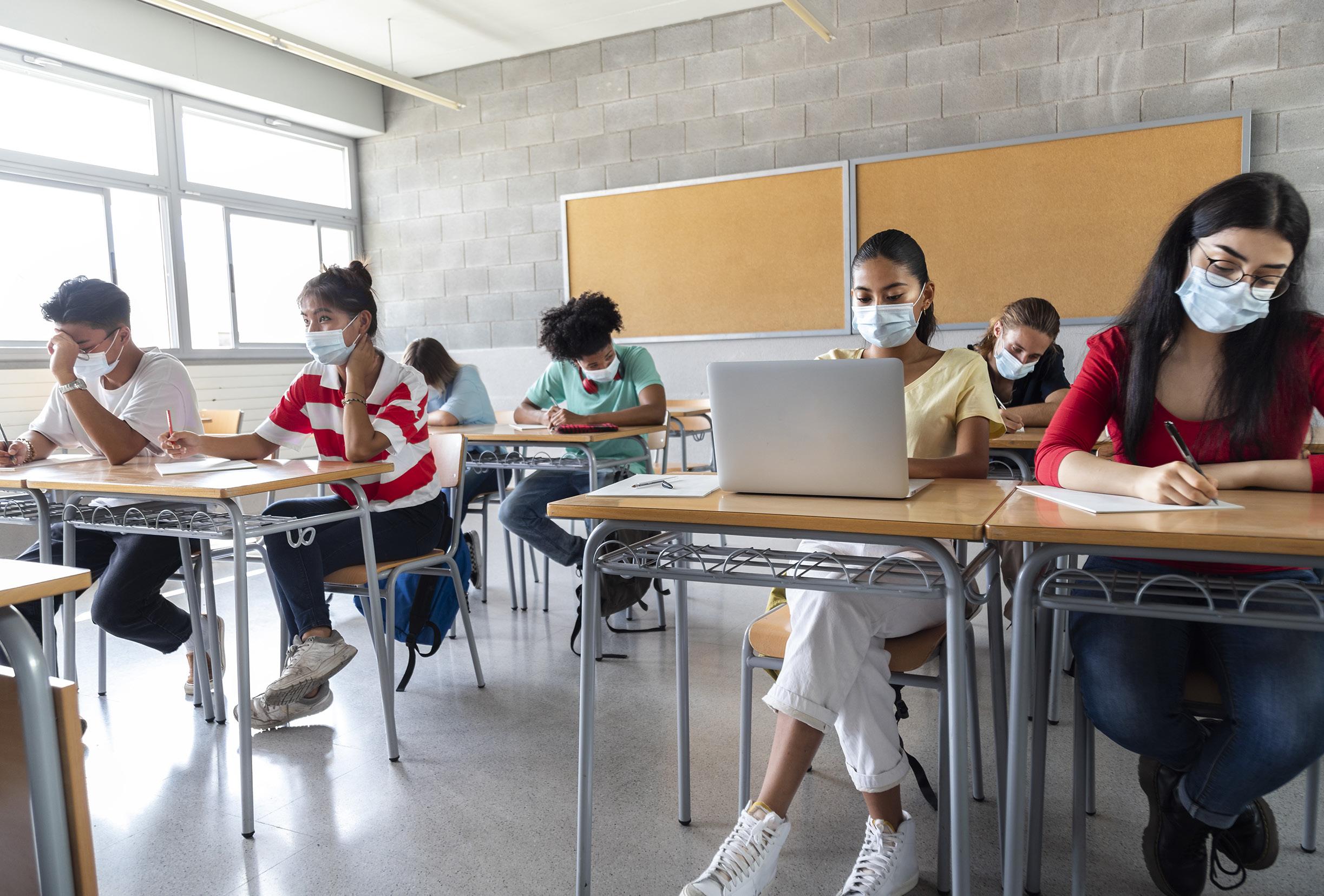
In general, we noted that elementary school teachers perceived greater effects on subject-specific competencies (French, mathematics, science, etc.), while secondary school teachers perceived greater negative effects on academic competencies (skills related to the role of student: attention, organization, problem-solving, etc.). When
asked in an open-ended question to name the aspects most impacted by COVID-19, respondents mentioned most often the social aspect for the elementary school level, followed by attentiveness and reading, whereas for the secondary school level, motivation, participation, attentiveness, and the social aspect were mentioned most frequently.
Elementary schools
In the fall, the three learning areas most affected by COVID-19 in elementary schools were student achievement in grammar, writing, physical education, and health (Figure 1). Based on teachers’ perceptions, it would appear that the gap between the strongest students and those students who had some prior difficulties widened between school closures and the resumption in the fall of 2020. In connection with the effects on students’ grammar and writing levels, teachers pointed out, in response to the open question of the questionnaire, that these difficulties were particularly significant for a number of allophone students who had potentially missed opportunities to develop their French skills during the lockdown. As for the problems experienced by very young children in physical education and health, some difficulties related to fine motor skills were observed.
www.edcan.ca/magazine EdCan Network | April 2023 • EDUCATION CANADA 33
PHOTO: ISTOCK
In the spring, the top three learning areas most affected by COVID19 according to elementary teachers were students’ attentiveness, problem-solving ability, and grammar levels (Figure 2). With respect to students’ attentiveness, teachers mentioned that students seemed to have difficulties with their role as students, including the ability to pay attention both in the classroom and remotely, and the ability to solve academic and socioemotional problems. Concerning grammar difficulties, as in the responses to the fall questionnaire, elementary teachers mentioned in the spring interviews that difficulties in French were particularly significant for allophone students.
irregular school organization (schedules, classroom bubbles, travel, school materials, digital learning platforms and tools, etc.) that resulted from compliance with the health measures in force proved difficult to follow for a number of students. In terms of problemsolving, teachers noted that this was a major difficulty for students in mathematics.
Secondary schools
In the fall, secondary school teachers reported negative effects primarily on their students’ attentiveness, organization, and problemsolving ability (Figure 3). It is interesting to note that the effects on learning in the subject area taught by the respondents were relatively small (it was only the seventh most named learning area). In terms of attentiveness and organization, the responses to the open-ended question in the questionnaire indicated that these difficulties were experienced primarily in distance learning, since intervening was more difficult online than in the classroom, but they also occurred at school. There were more distractions online, and this made keeping students’ attention a challenge for teachers. In the classroom, the
In the spring, the top two negative effects of COVID-19 on students perceived by teachers still concerned their attentiveness and organization skills, followed by their autonomy and their level in the discipline being taught (Figure 4). Like their elementary school colleagues, secondary school teachers noted in the interviews that they had observed a greater effect of COVID-19 on students who were already struggling pre-pandemic, as well as large differences in adjustment between the strongest and struggling students upon returning to school. Secondary school teachers mentioned in the interviews that many students had little support at home, and that hybrid1 instruction would most likely further widen the gap between strong students, who would succeed in any case, and students more at risk of failure, for whom the risk would increase. It was also noted that student achievement in the subject being taught rose to the rank of fourth highest key negative effect of COVID-19. We can assume that students and teachers alike eventually felt the impact of the various delays that occurred both during the school closure and throughout the school year when the subject content had to be scaled back “to the essentials.”2
Some caveats
34 EDUCATION CANADA • April 2023 | EdCan Network www.edcan.ca/magazine
Grammar level Writing level Physical education and health level Reading level Attentiveness Problem-solving ability Mathematics level History, geography and citizenship education Organizational capability Science and technology level Autonomy Ethics and religious culture level Ability to work together 0 1 2 3 4 5 6 Attentiveness Problem-solving ability Grammar level Writing level Autonomy Reading level Organizational capability Mathematics level Ability to work together Physical education and health level History, geography and citizenship education level Science and technology level Ethics and religious culture level 0 1 2 3 4 5 6 Attentiveness Organizational capability Problem-solving ability Writing level Physical health Reading level Level in the discipline I teach Autonomy Ability to work together 0 1 2 3 4 5 6 Attentiveness Organizational capability Autonomy Level in the discipline I teach Problem-solving ability Physical health Writing level Reading level Ability to work together 0 1 2 3 4 5 6
Figure 1. Perceived negative effects of COVID-19 on students: Elementary Schools – Fall 2020
Figure 2. Perceived negative effects of COVID-19 on students: Elementary Schools – Spring 2021
Figure 3. Perceived negative effects of COVID-19 on students: Secondary Schools – Fall 2020
Figure 4. Perceived negative effects of COVID-19 on students: Secondary Schools – Spring 2021
Before concluding, we need to mention that, like any study, this one has its limitations. First, as with the vast majority of studies on the effects of COVID-19 in both the educational and other fields, it is impossible to establish a pre-pandemic picture of the study population. It is therefore difficult to determine what is specifically the impact of COVID-19 and what is the result of prior situations or influences. Second, although our sample included several hundred students and teachers, it represented only a small proportion of the study population. Furthermore, the questionnaire respondents and interview volunteers may have been those teachers who had the most to say about the situation or who had experienced more difficulty than others in this particular school year.
Rebuilding schools and keeping the focus on students
Although the negative effects of COVID-19 on students as perceived by teachers are relatively significant, it was noted in both the questionnaires and the interviews that 100 percent of participating teachers emphasized the high resilience of students during the 2020-2021 school year. Many also mentioned that the student support measures (Conseil supérieur de l’éducation, 2021) had been very helpful. In addition, and interestingly, the students felt that the impact of COVID-19 on their learning was rather weak, whereas, as we have shown, the teachers had the perception that these effects were quite significant. This raises the question: did students underestimate the effects of COVID-19 or did teachers overestimate them? The reality probably lies somewhere in between. Regarding the teachers’ perceptions, it should be noted that the usual stresses associated with the teaching profession (Eblie Trudel et al., 2021), in addition to those associated with the pandemic, the health measures, and disruptions in school organization during the 2020-2021 year may have influenced their representation of the effects of COVID-19 on their students.
Since we do not know the long-term effects of COVID-19 on students, it is important to continue research on Quebec schools in order to support and equip them as they rebuild. Moreover, it is essential that teachers and other school staff working with students be adequately trained to support and assist these students in the short, medium and long terms, for example, in the areas of bereavement, stress and trauma counselling, school-family collaboration, and counselling for students with various difficulties (Müller & Goldenberg, 2020). EC
index to advertisers
This project was funded by the Social Sciences and Humanities Research Council of Canada (SSHRC) and the Ministère de l’Éducation du Québec, under the Partnership Engage: COVID-19 Special Initiative program.
Acknowledgements
This article was written by Marion Deslandes Martineau, Patrick Charland, Yannick Skelling-Desmeules, Olivier Arvisais, and Marie-Hélène Bruyère. The authors would like to thank the partners of the Ministère de l’Éducation and the school service centres involved, as well as their colleagues, co-researchers and collaborators in the study: Jonathan Bluteau, Isabelle Plante, Isabelle Gauvin, Stéphane Cyr, Tegwen Gadais, Éric Dion, Joanna Trees Merckx, and Jay S. Kaufman.
NOTES
1 Hybrid teaching consists of teaching that is sometimes done remotely and sometimes in the classroom. For much of the 2020-2021 school year, this was the schedule that was imposed on students in the upper secondary level (i.e., students aged 14-17).
2 Lists of essential knowledge to focus on in each discipline have been made available by the Ministère de l’Éducation, to the detriment of other concepts normally included in the curriculum.
References
Conseil supérieur de l’éducation. (2021). Returning to normal? Overcoming vulnerabilities in an education system responding to the COVID-19 pandemic. Le Conseil. www.cse.gouv.qc.ca/en/rebe20-21-covid
Donnelly, R., and Patrinos, H. A. (2022). Learning loss during Covid-19: An early systematic review. PROSPECTS, 51(4), 601609. doi.org/10.1007/s11125-021-09582-6
Eblie Trudel, L., Sokal, L., and Babb, J. (2021). Teachers’ voices: Pandemic lessons for the future of education. Journal of Teaching and Learning, 15(1), 4-19. doi.org/10.22329/jtl.v15i1.6486
Müller, L.-M., and Goldenberg, G. (2020, July 5). Education in times of crisis: The potential implications of school closures for teachers and students. Chartered College of Teaching. https://my.chartered.college/wp-content/uploads/2020/05/CCTReport070520_ FINAL.pdf?fbclid=IwAR0t62tROapzSQv28ofnIVc3AhE44UuFTP19dg6_ V0-o7y8NqAFkEawAWZ8
UNESCO. (2022). Education: from school closure to recovery. UNESCO. www.unesco.org/en/covid-19/education-response
UNICEF. (2015, January 19). The investment case for education and equity. UNICEF, Education Section. https://unicef.org/reports/investment-case-education-and-equity
To advertise in Education Canada, contact: Dovetail Communications Inc. (905) 886-6640, ext 306 or advertise@edcan.ca
www.edcan.ca/magazine EdCan Network | April 2023 • EDUCATION CANADA 35
Advertiser Page Canadian Institute of Reading Recovery 23 Experiences Canada 31 Publication of an advertisement in Education Canada does not constitute an endorsement
the EdCan Network/CEA
any advertiser’s product or service, including professional learning opportunities.
by
of





 By Robin Liu Hopson and Jasmine Hodgson-Bautista
By Robin Liu Hopson and Jasmine Hodgson-Bautista
 By Trista Hollweck, Megan Cotnam-Kappel, Andy Hargreaves and Amal Boultif
By Trista Hollweck, Megan Cotnam-Kappel, Andy Hargreaves and Amal Boultif




 BY RODA MUSE, Secretary General, Canadian Commission for UNESCO
BY RODA MUSE, Secretary General, Canadian Commission for UNESCO






 BY FIONA SHEN AND RAEESA HOQUE
BY FIONA SHEN AND RAEESA HOQUE







